September Sunshine
So many Celtic Trails customers choose a Hadrian’s Wall Path walking holiday and this September I too was lucky enough to spend a week on ‘The Wall’. Jon Snow jibes from colleagues aside, I am pleased to report the sun shone and winter was definitely not coming any time soon (apologies to non Game of Thrones fans).
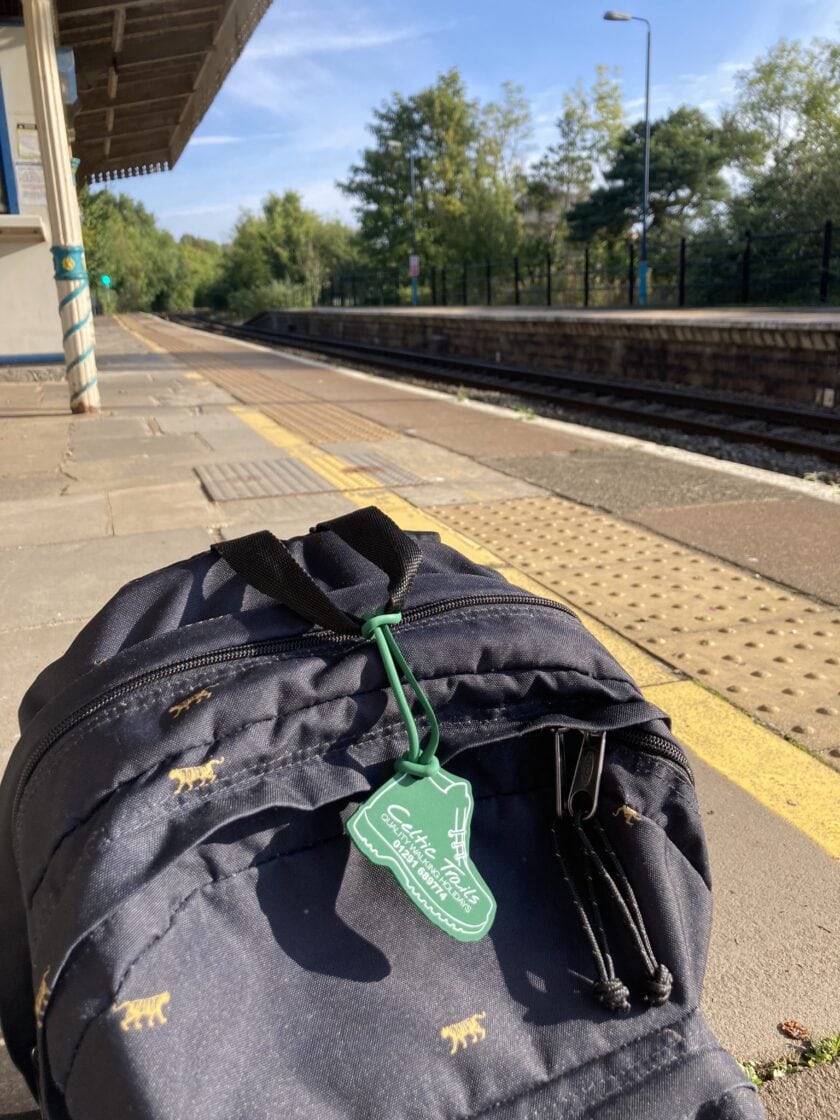

Anticipating an Adventure
Anticipation and excitement prior to any walk, whatever the duration, are very much a part of the whole experience; a new guidebook and map to paw over, buying new socks (why does this always feel so wonderful?) and in my case, facing up to the fact that walking poles are not ‘giving in’, but a sensible kit addition.
I’ll admit I love the word ‘adventure’ rather than walk, trek or hike, possibly after the years spent encouraging offspring to don their hats and boots regardless of weather conditions. I’ll also confess I’m no history buff, giving up the subject in favour of O-level geography and field trips to Bannau Brycheiniog (Brecon Beacons) or the South West Coast of Cornwall and Devon. Unsurprisingly, I was more than a little excited by a week’s walking; well-trodden paths, blissfully fresh air, a spot of wildlife watching and evenings chatting with like-minded souls in a traditional public house (for research purposes, naturally).
History
However as my departure drew closer, I became more and more intrigued with the history of the ancient Wall, the people who lived there, meticulously spaced turrets and milecastles and the excavations that continue to yield secrets after nearly 2000 years. English Heritage and Vindolanda Trust websites showcase beautifully the lives of Roman and European warriors who came to Britain to fight, defend and build their lives here. Over 7,000 pairs of shoes, golden coins, footprints in terracotta tiles, beauty items, intricate jewellery, weapons, armour, horse harnesses, the Vindolanda Writing Tablets – there was a bewildering amount to see. Mother nature had created a perfect defensive site in the form of a slab of resistant Whinstone and Emperor Hadrian had expertly taken advantage of it – I was hooked.
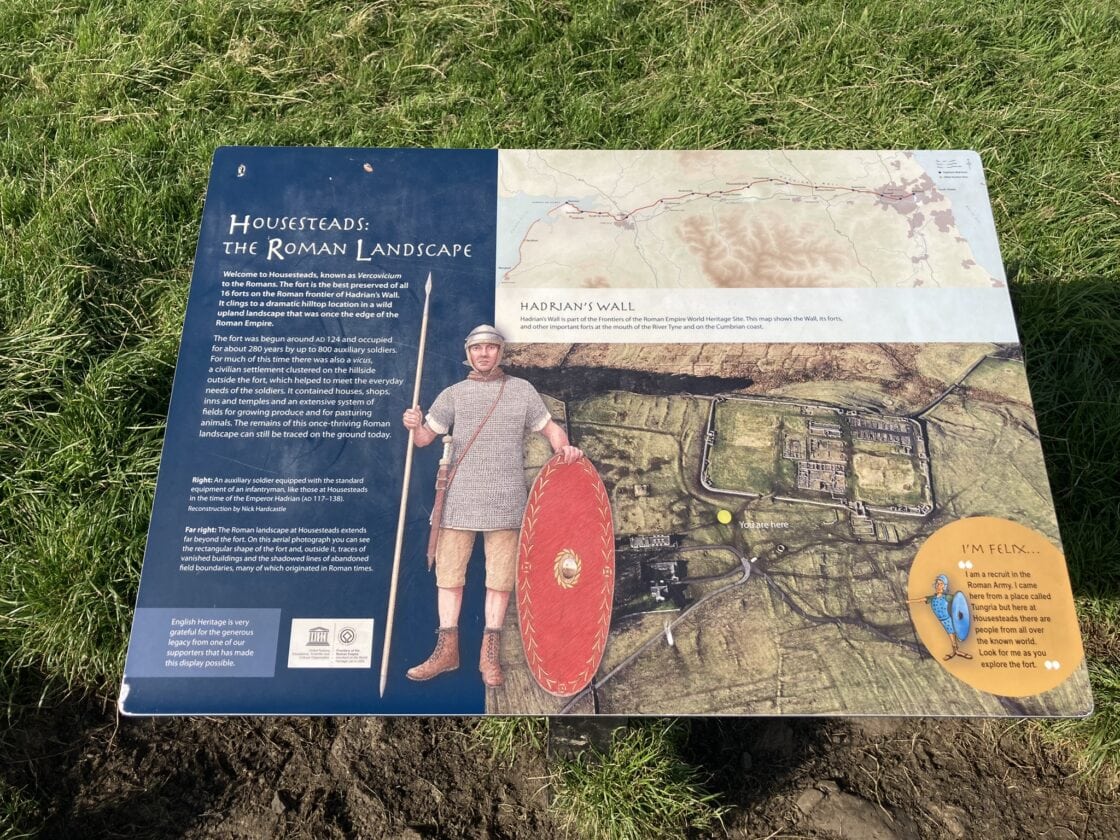
Something for everyone
The beauty of Hadrian’s Wall Path (HWP) holidays is that there’s an itinerary to suit everyone. We know some of you love a high daily mileage challenge, and our new 5 day and 6 day itineraries are perfect for a coast to coast stomp. Others prefer the satisfaction of bagging the full 84 miles, but with a little more flexibility to visit the sites, our 10 day itinerary with optional rest days is perfect for that. Our ‘best of’ itineraries allow you to explore the central section of the path, home to well excavated sites, larger forts and museums. Our new for 2025 ‘best of’ itinerary offers manageable yet rewarding mileages, more time to enjoy the sites or linger a little longer along the walk. We’re also very pleased to announce that all Celtic Trails HWP itineraries can be walked in either direction.
Here’s a rundown of what we did (‘we’ being my grown up offspring, whom thankfully loves an adventure and is quite handy with a camera).
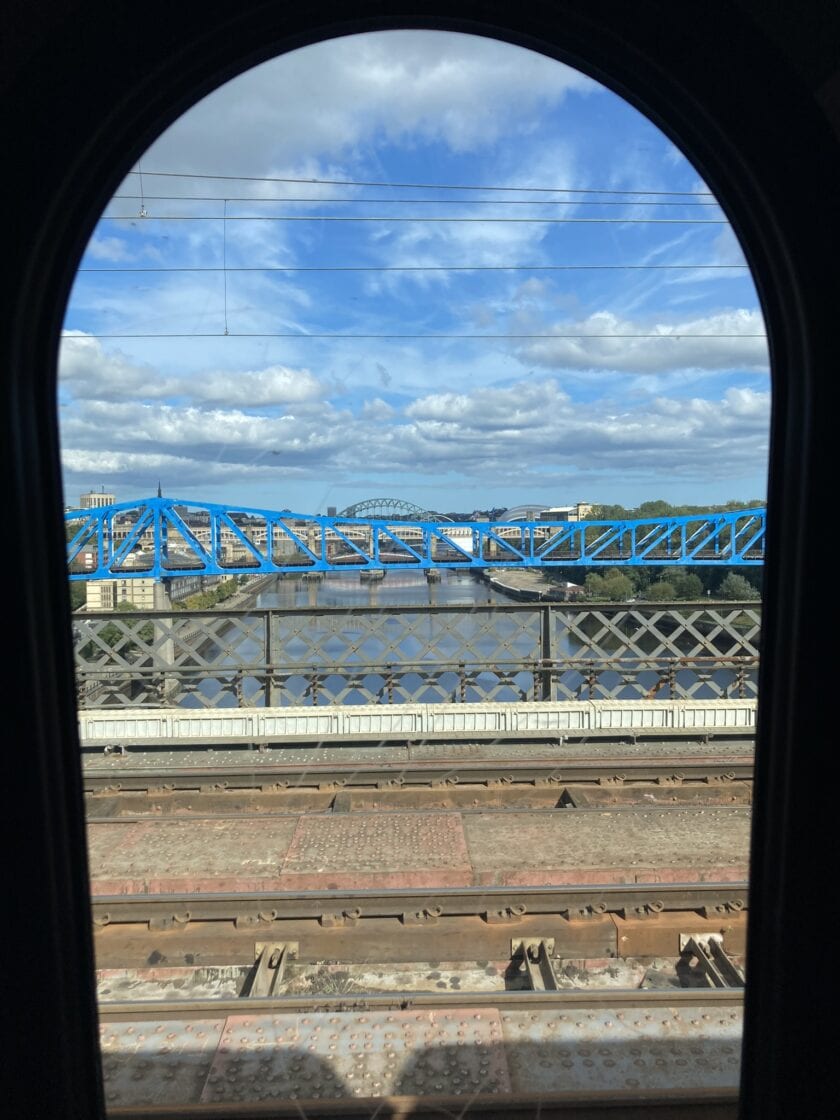
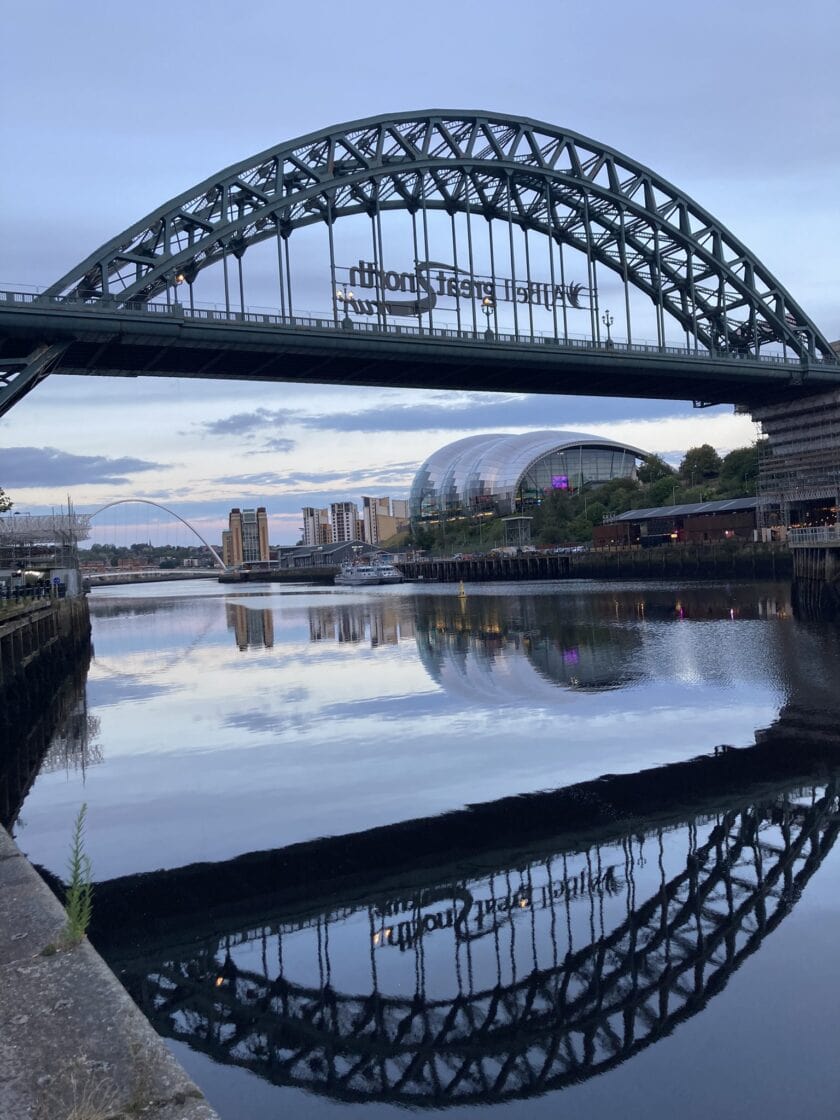
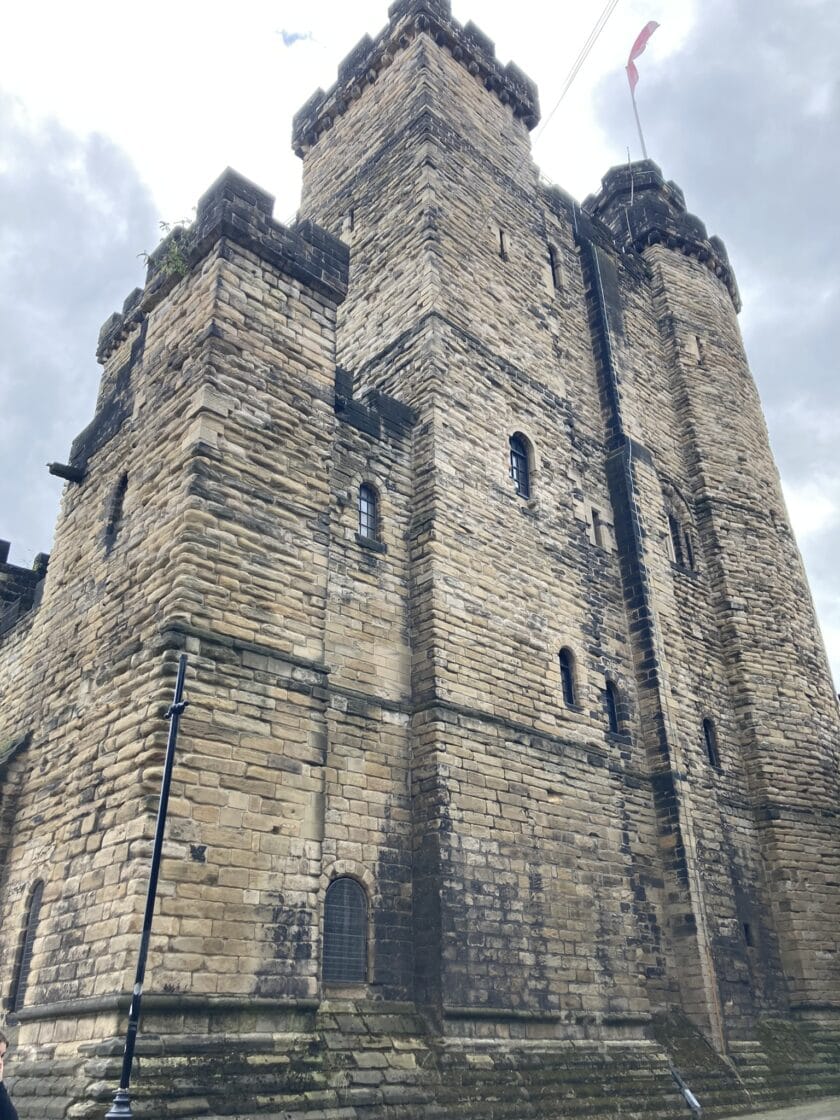
Newcastle
Our train arrived punctually in Newcastle and provided great views of the iconic Tyne and Millennium Bridges and Quayside where we staying that night. Glad to be on our feet at last, we walked the short distance to The Vermont Hotel, a grand hotel set back from the Quayside and easy to find. After checking in, we had a quick look around the Cathedral before buying tickets to the small but fascinating Castle Keep. This part of the city known as The Garth is steeped in history, views from the roof are superb and illustrate why the Romans utilised the city as a supply base and beginning of their epic build. It goes without saying that ending your walk in the city on our W-E itineraries is also very popular, with its wide choice of restaurants, bars and celebratory atmosphere.
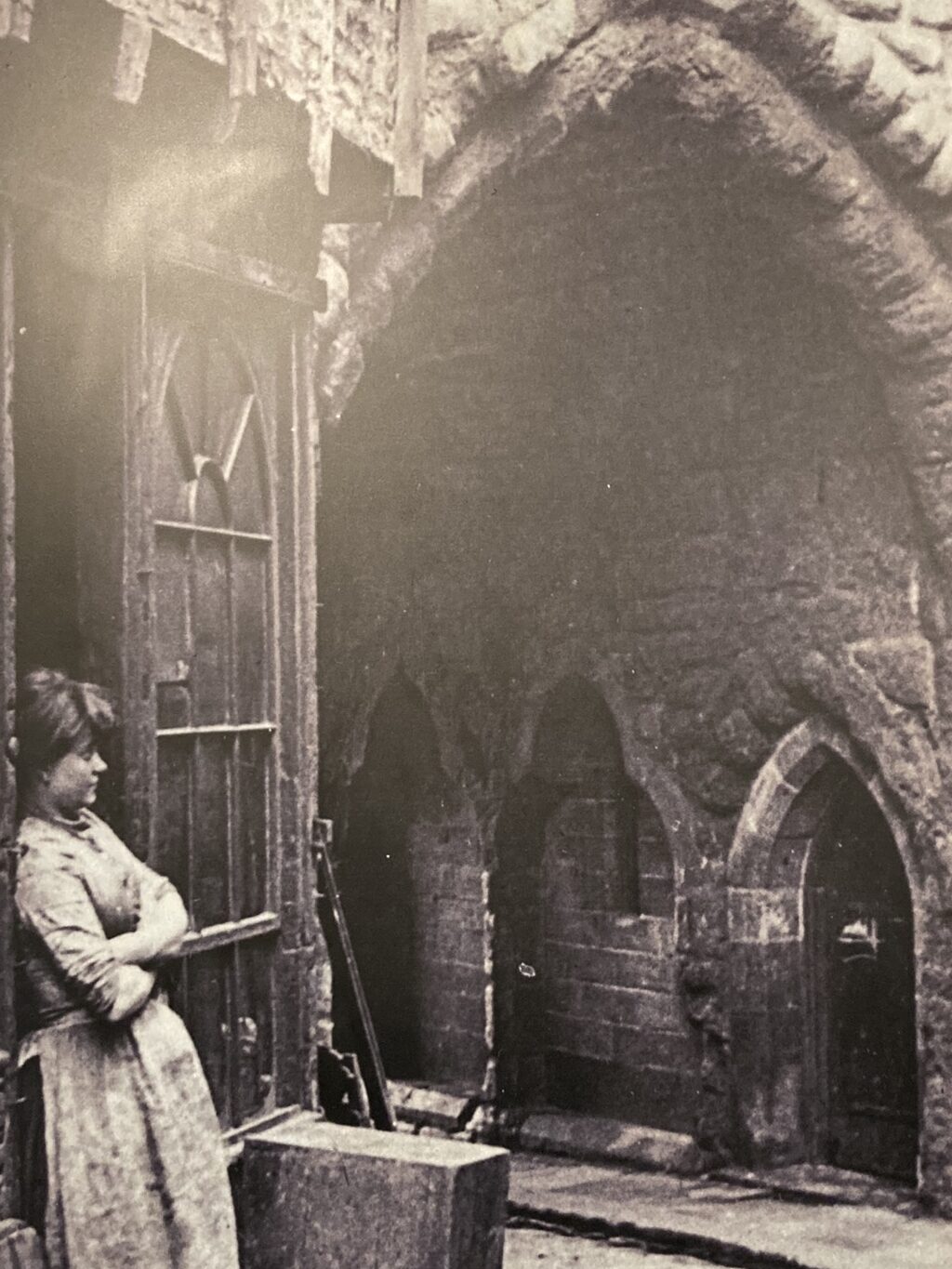
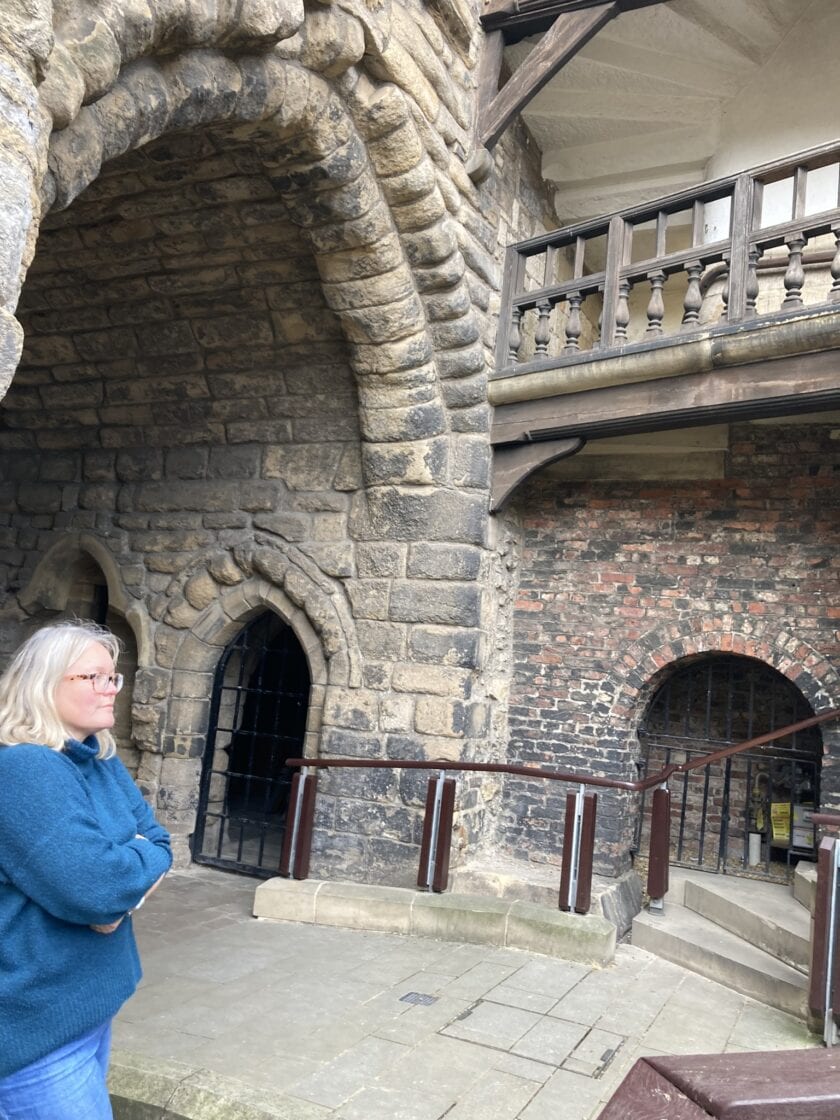
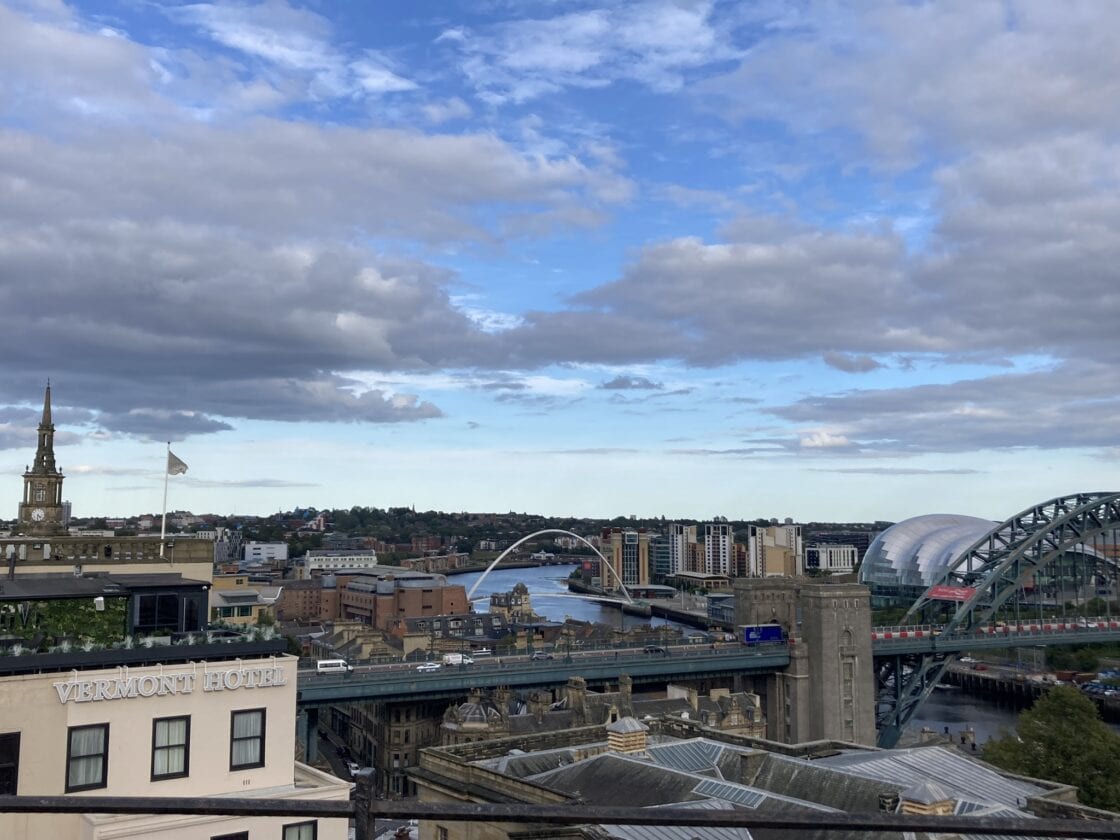
Segedunum Roman Fort: the walk West begins
After a good night’s sleep followed by a super breakfast, we headed towards Segedunum Roman Fort at Wallsend and the official start of our walk. We were greeted by Sentius Tectonicus, an eight foot tall Roman centurion art installation constructed from weathering steel and a nod to the layers of history within Wallsend. Both the excavations and the historic Swan Hunter shipyard that once dominated the area are best seen from the impressive 35 metre viewing tower. Segedunum was an inspiring place to start our journey; the staff were incredibly knowledgeable and the interpretation displays helpful.
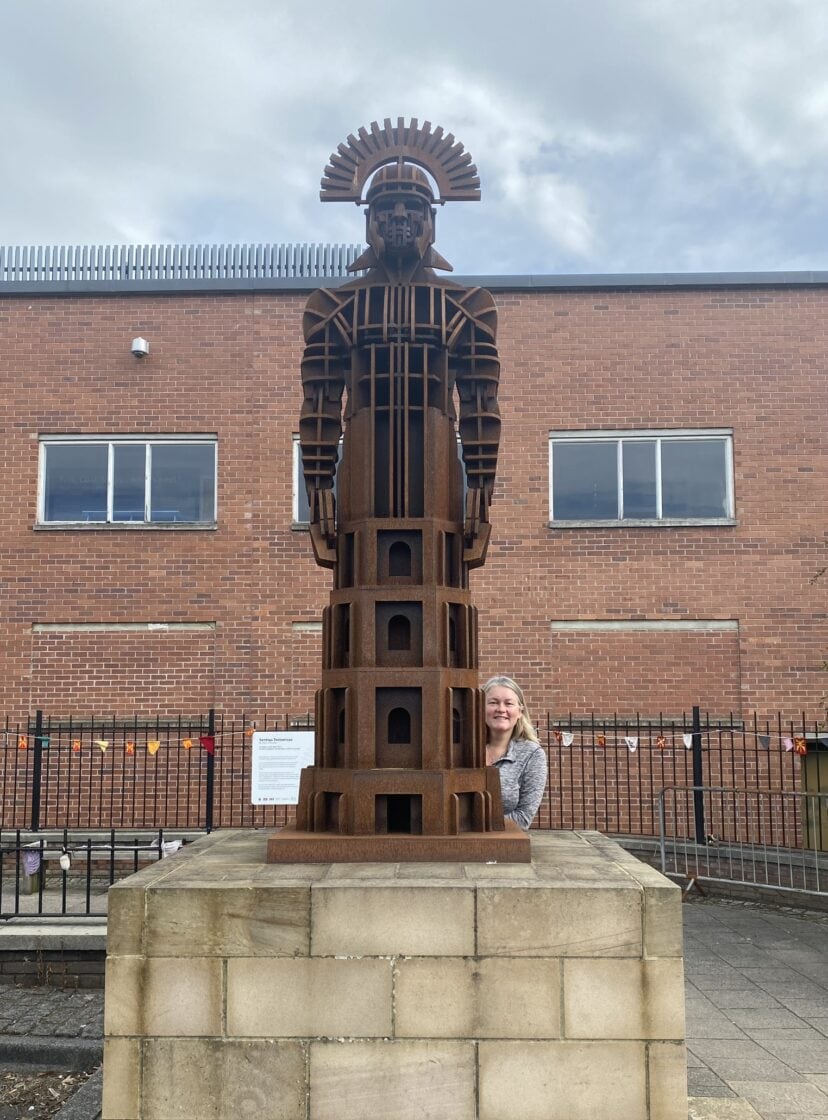
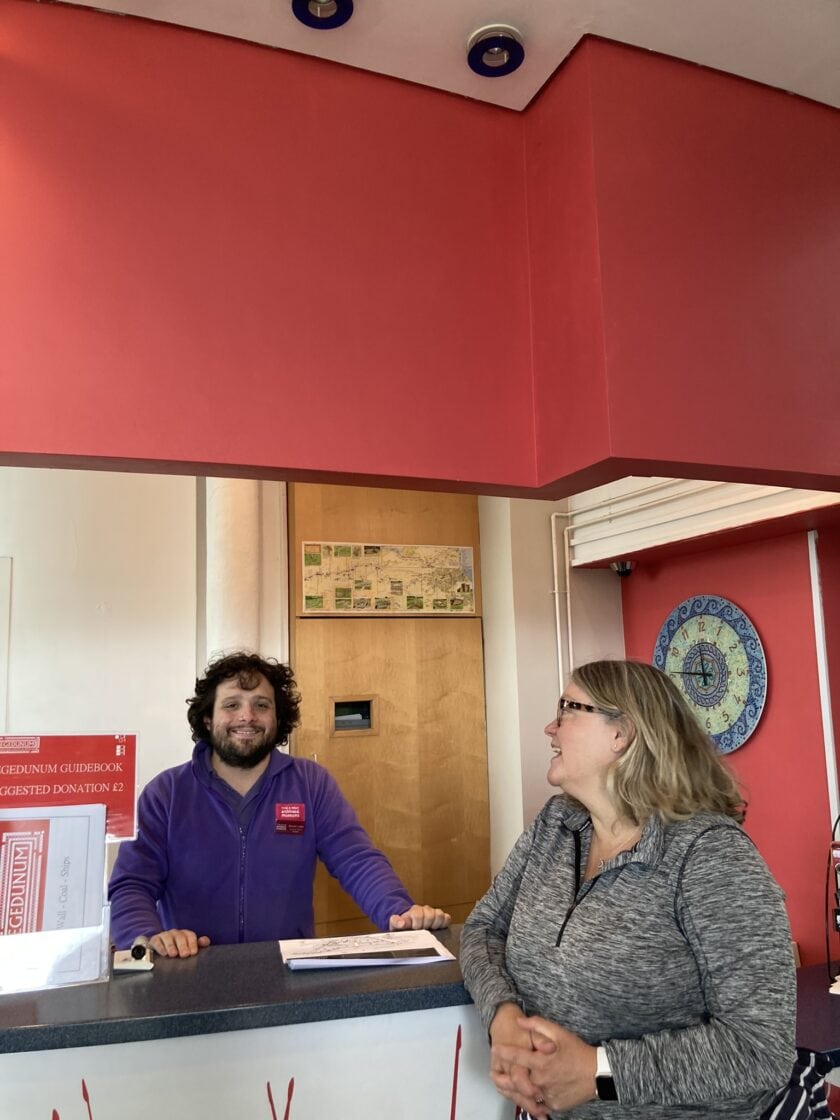
The walk through the city follows the Tyne upriver to Newburn, passing the vibrant Quayside, through part of Newcastle Country Park and to Keelman’s Lodge, our accommodation for the night. The path was popular with locals, busy but not crowded and trainers/trail shoes were fine for this stretch of path although we spotted a few folk in traditional walking boots. Not much wildlife to see aside from a few swans and a ‘lesser-spotted rowing quad’ full of hardy types enjoying the calm water. We arrived to a warm, friendly welcome at Keelman’s and a handful of Newcastle United supporters discussing the day’s results. The pub itself is a Grade II listed Brewery but we stuck to the soft stuff, enjoyed classic fish ‘n’ chips and earwigged tall tales shared by walkers on another table before retiring to our comfortable room.
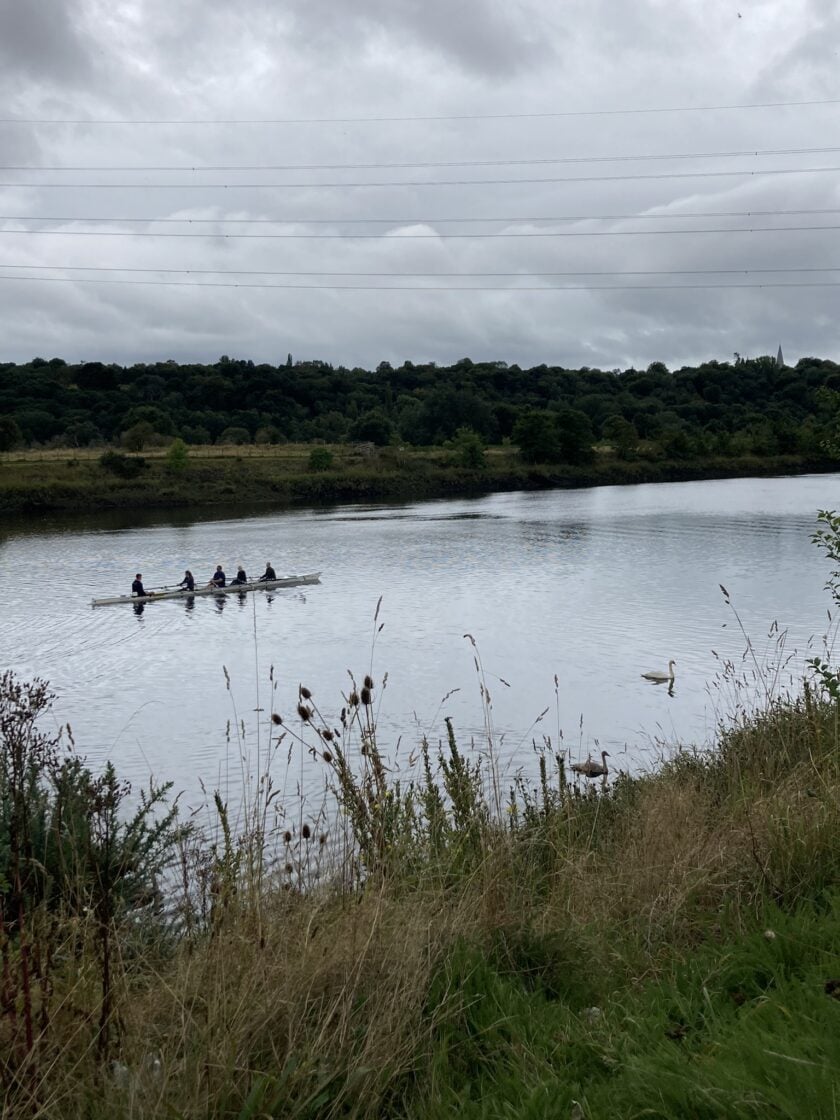
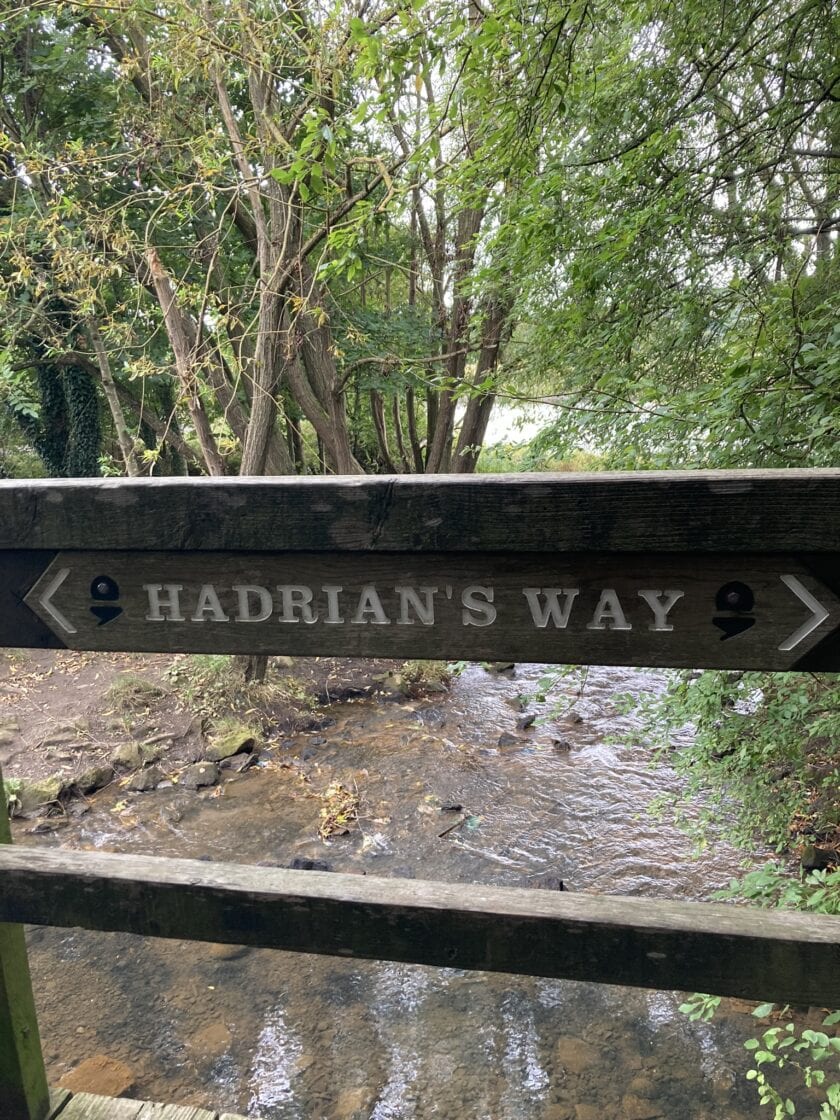
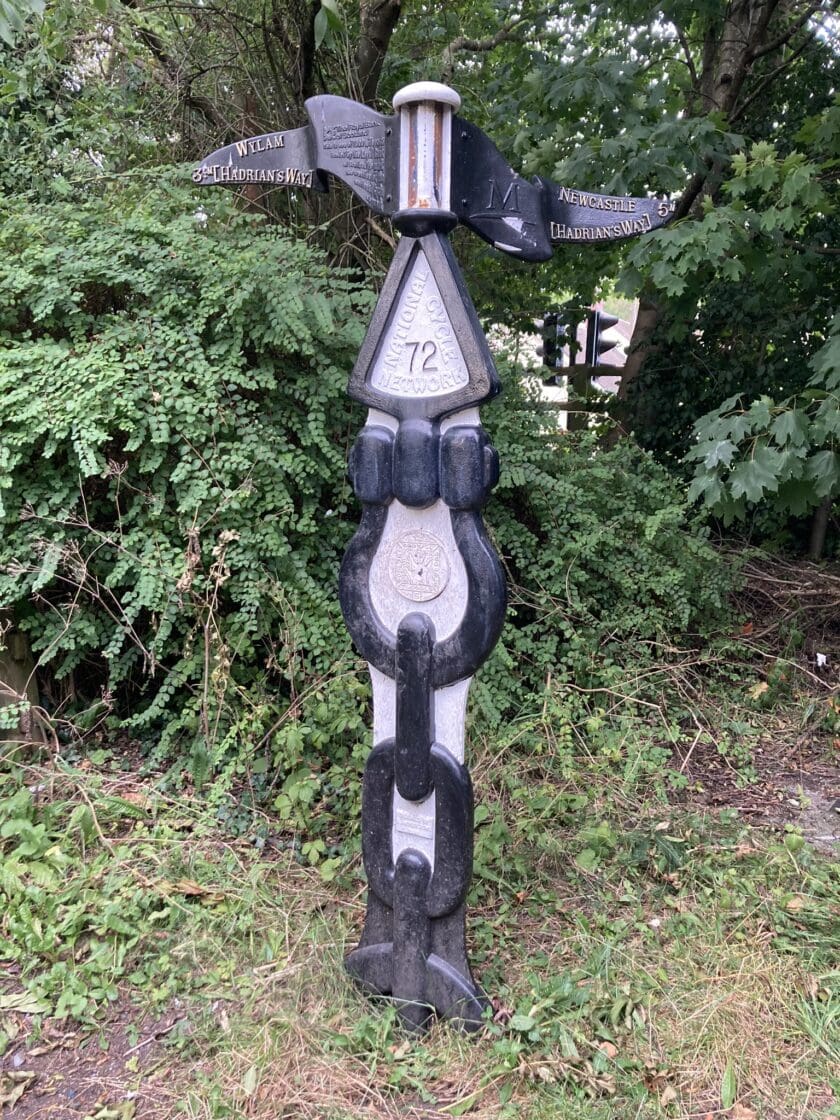
Upstream and onwards to Heddon and Wallhouses
Next morning, we followed the path along the riverbank, chatting to locals and dogwalkers alike. The path heads inland and climbs gradually before reaching the village of Heddon on the Wall. We made a detour to look at a long and well preserved stretch of Broad Wall that’s just off the official path, but easily found.
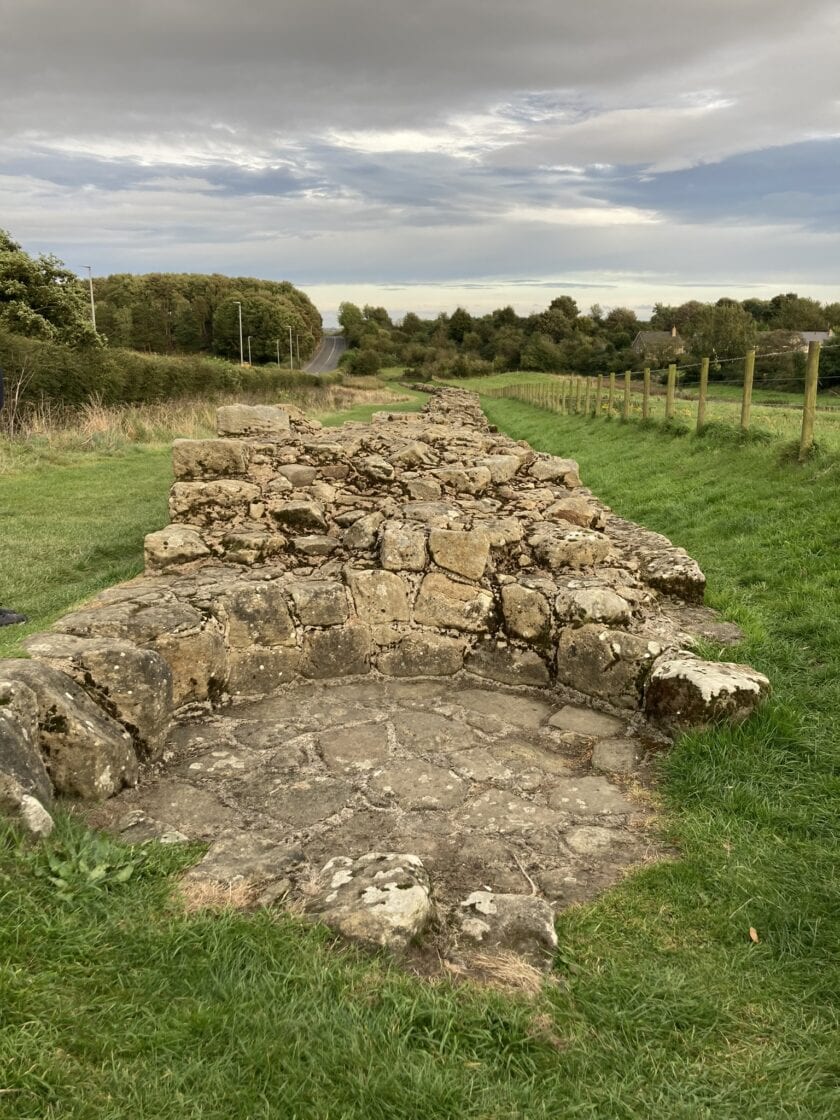
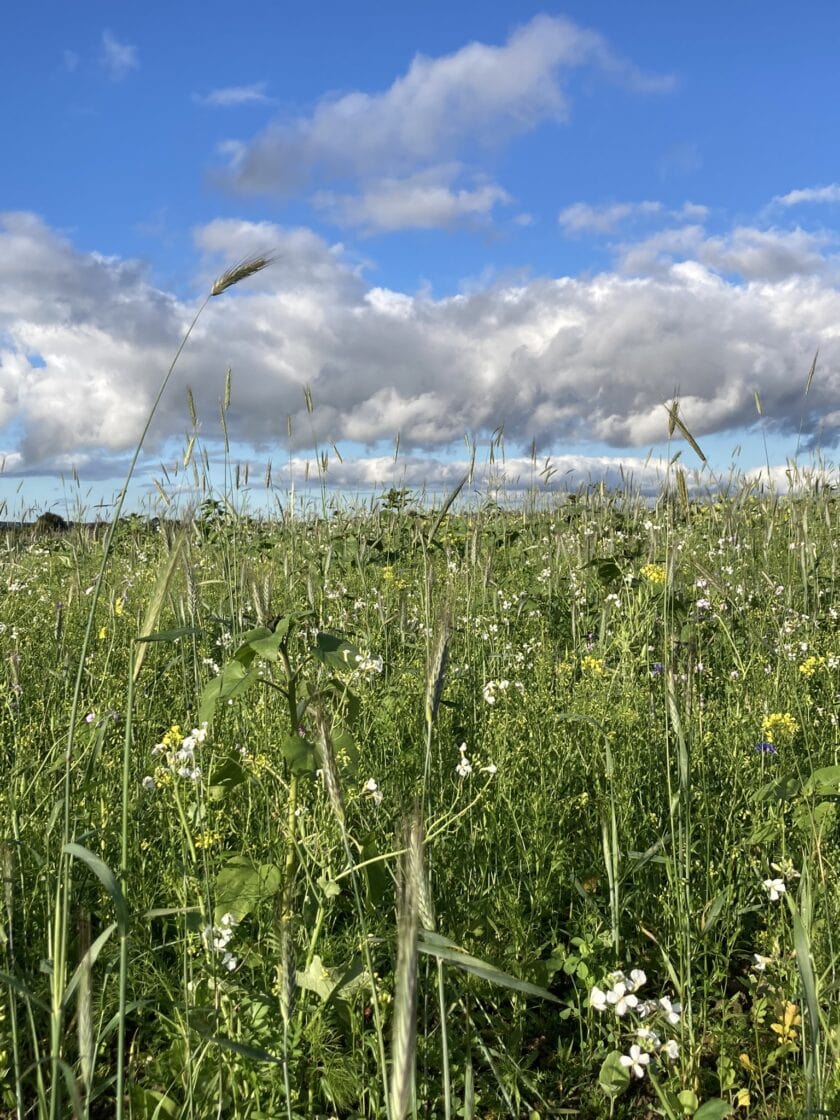
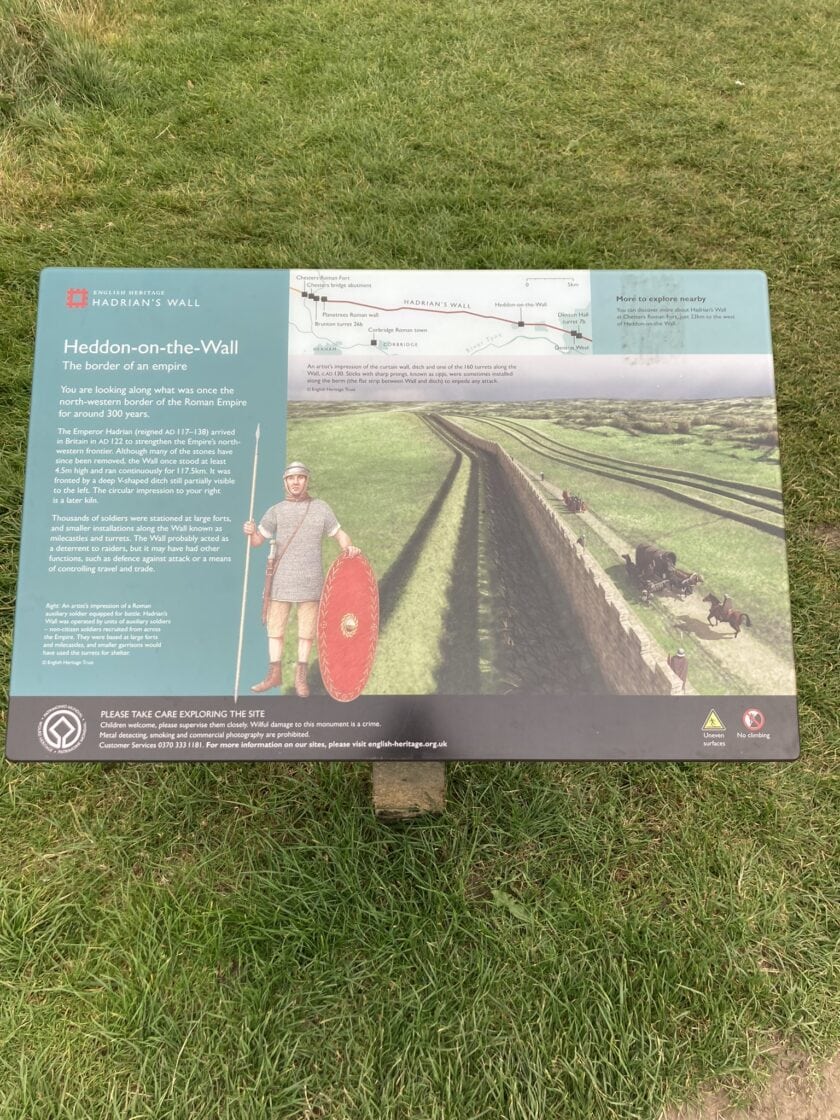
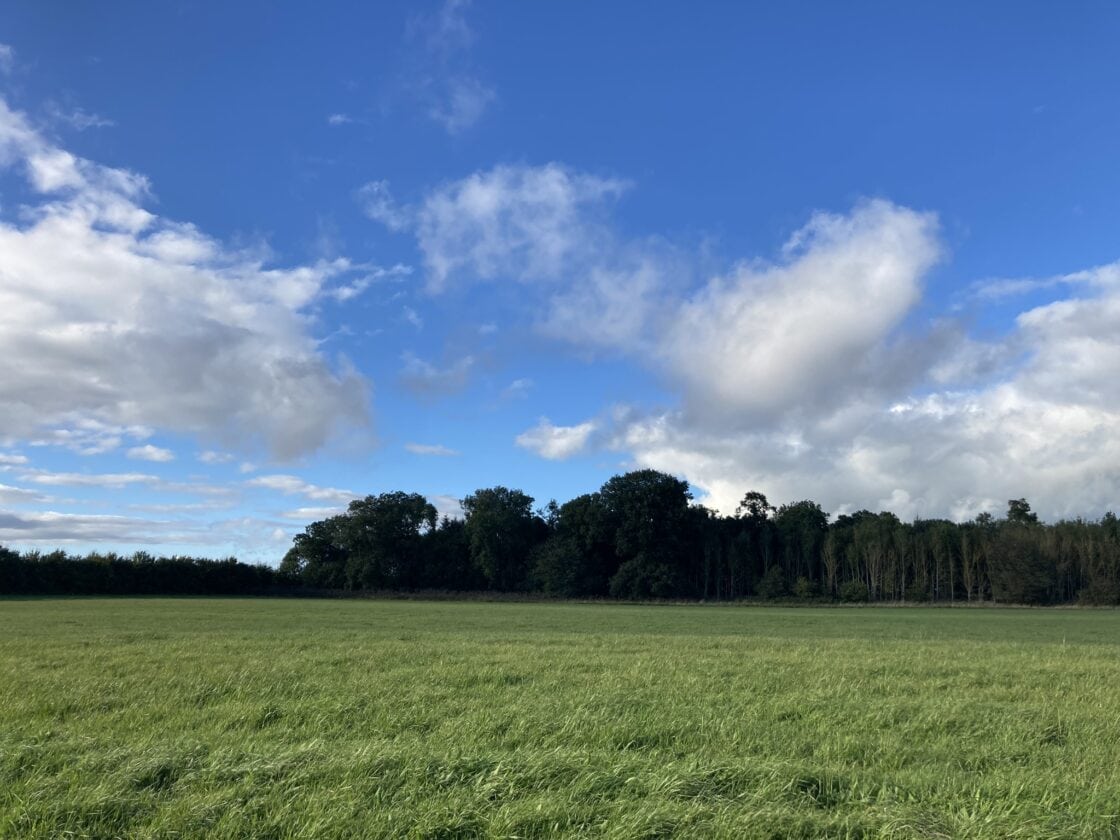
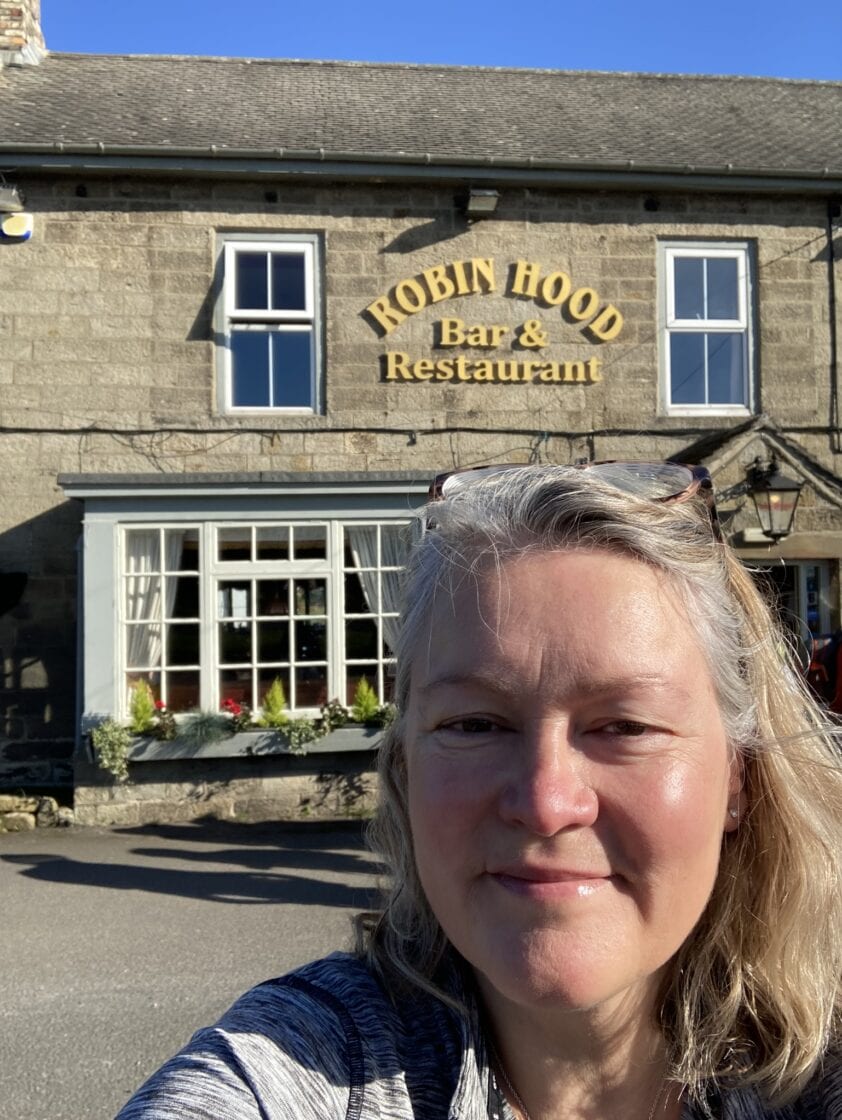
We enjoyed a peaceful walk in the afternoon sunshine, ending at the Robin Hood. It was great to meet the team in person, before a wonderful shower then a perfect roast dinner supper in their packed restaurant – a clear favourite with walkers, families and locals alike. The landscape here is open with views in every direction across fields and small woodlands; distant views of the North Pennines are possible with good visibility. The path is both well signposted and well trodden so no map reading required thus allowing time to chat and enjoy the last of the summer wildflowers. Lone but untouched stretches of Wall are visible in locations such as Planetrees, just further east, but the remains of the Vallum and other earthworks were more obvious all along this stretch. For those interested in what remains of Emperor Hadrian’s earthworks, look up LiDAR maps of Hadrian’s Wall, you’ll be amazed at what’s visible but be warned, its a time thief!
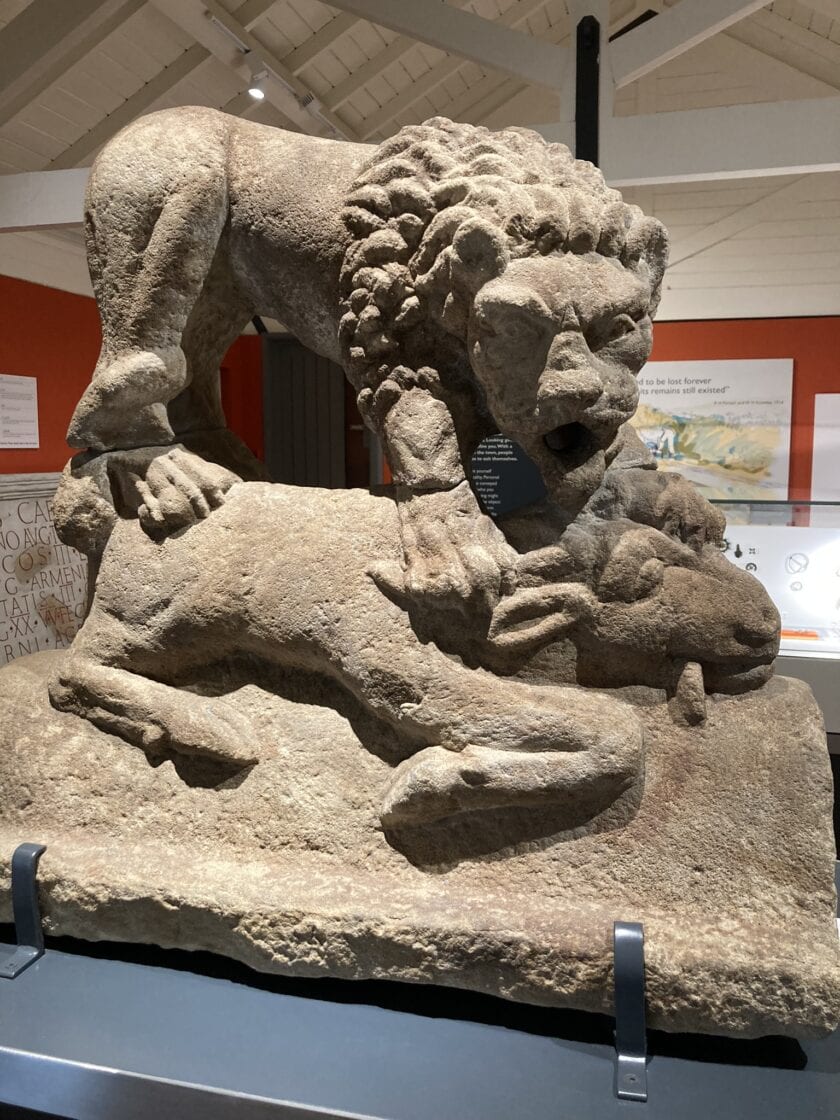
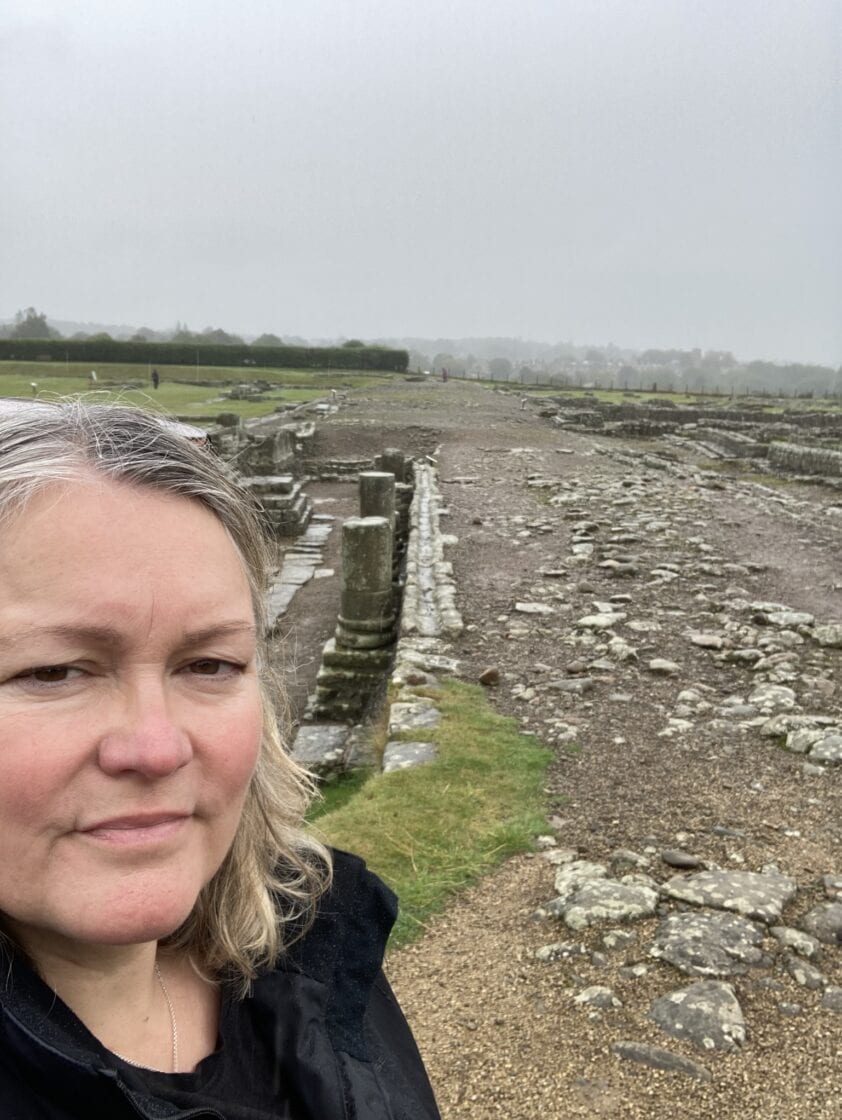
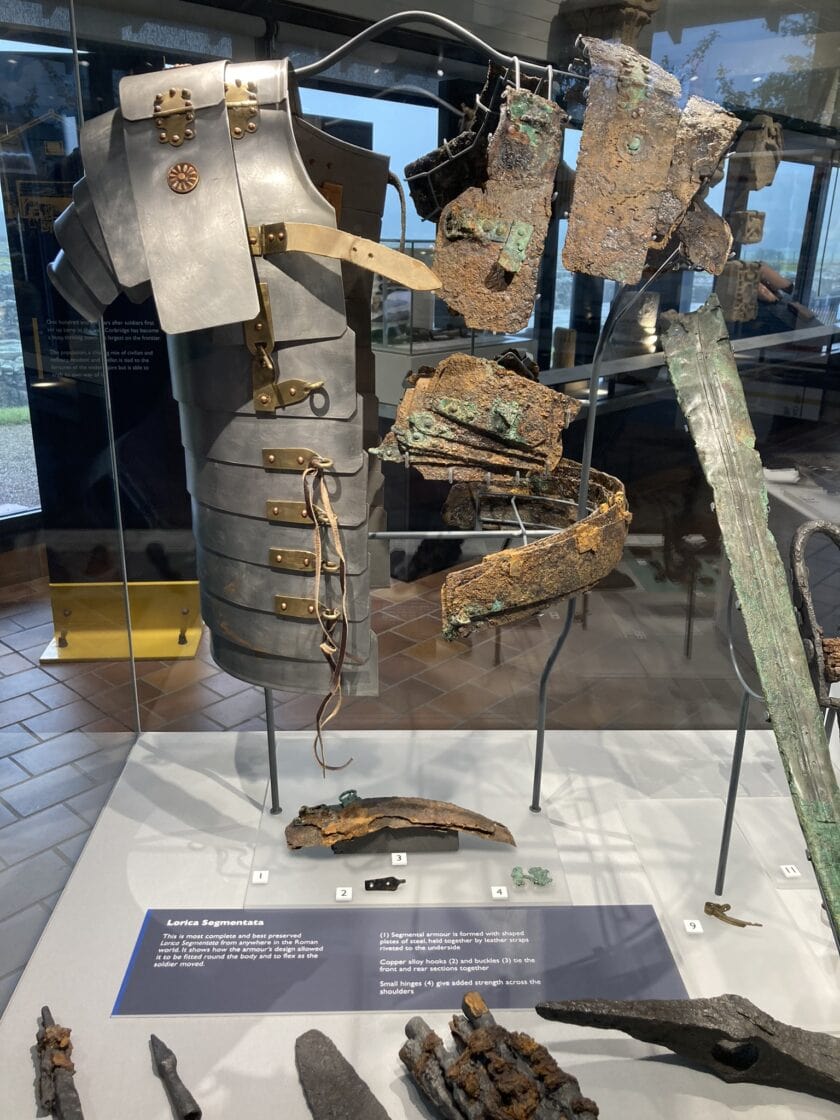
Corbridge Roman Town
One of my ‘must see’ artefacts was the Corbridge Hoard, a small box of personal items wrapped up cloth and hidden by a soldier as he left the site. It’s a find of international importance and is beautifully displayed in the newly refurbished Corbridge Roman Town Museum. The Corbridge Lion is a stone carving of a lion astride a cow that’s at some point has been repurposed as a fountain, nevertheless, one of my favourite exhibits. We stood on the ‘high street’ of the town, it was much larger than I’d anticipated and we’d soon learn that the majority of the site remains buried.
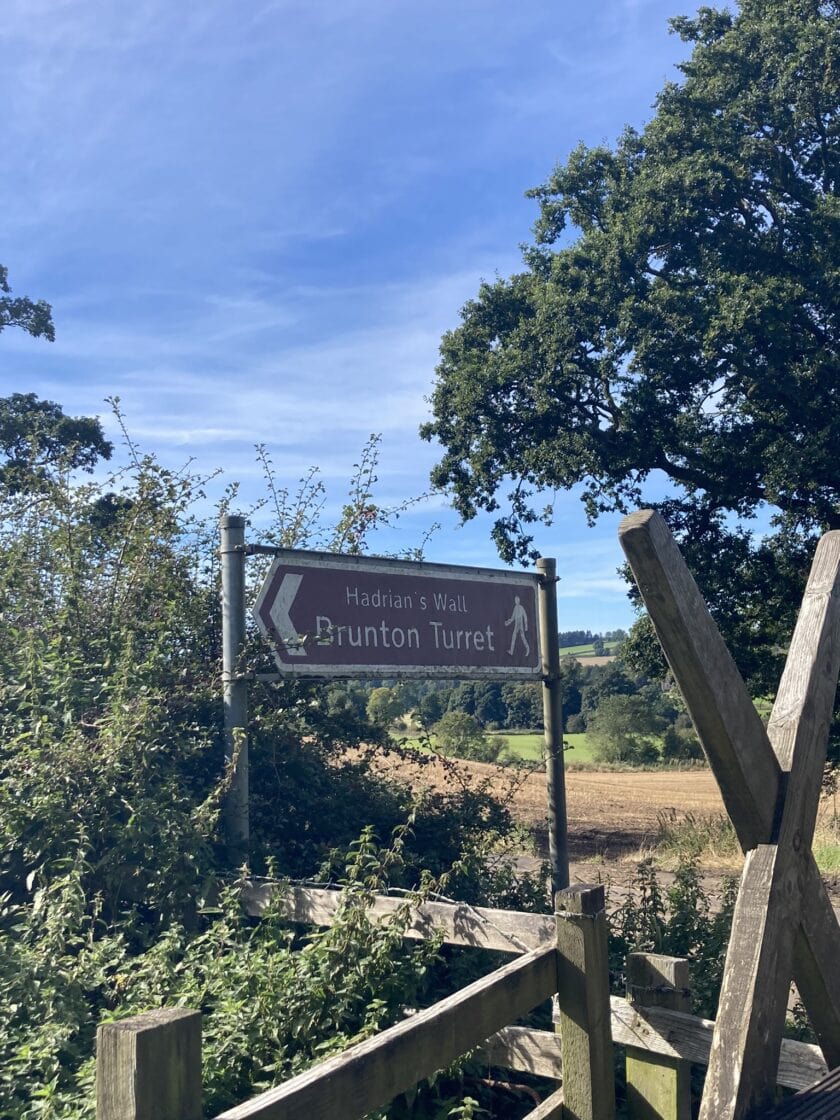
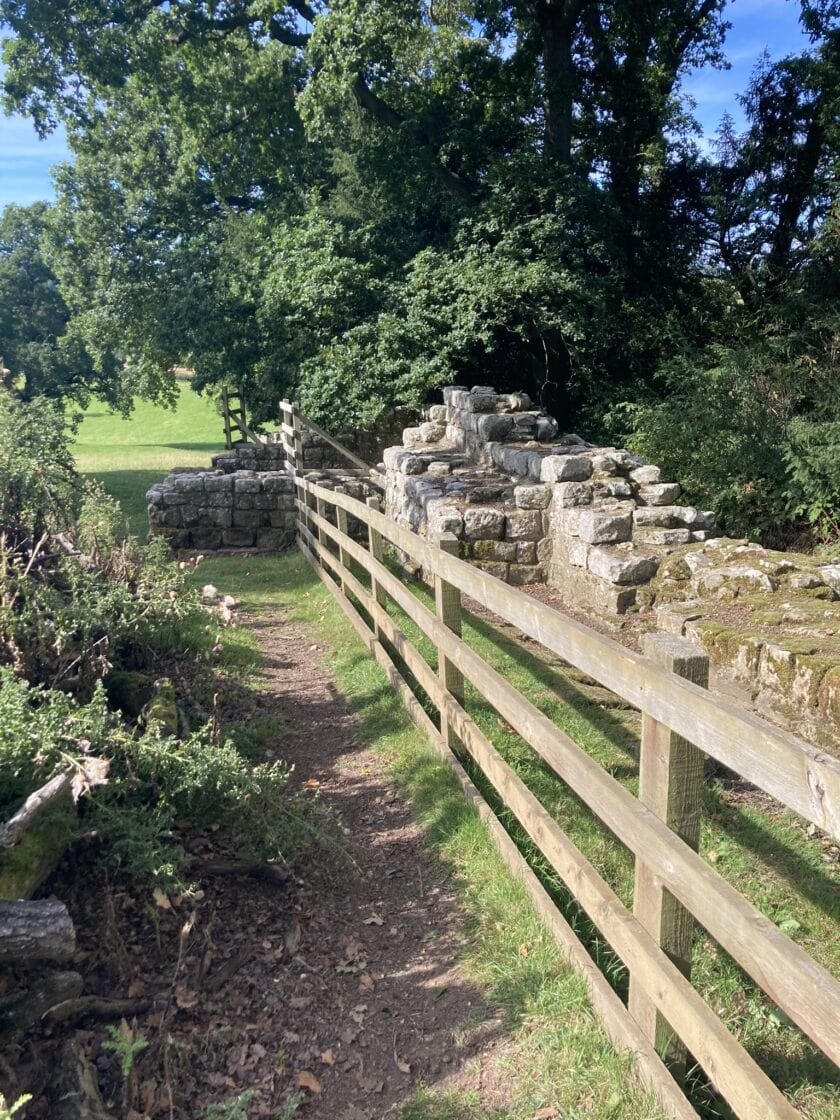
We took another slight path diversion to visit Brunton Turret set in a picturesque, grazed field and where the curtain wall is broad on one side and narrow on the other, a result of orders from above to speed up works. Turrets are the smallest structures on the Wall but were still able to house groups of soldiers who controlled access and movement of goods in both directions. The remaining stonework looked almost perfect, giving away few signs of its age.
Chesters
After being treated to another top notch breakfast at The County Hotel in Hexham, we set off to Chesters Fort, home to The John Clayton Museum. The space was full to the rafters with an incredible number of artifacts; Clayton inherited Chesters in 1832 and made it his life’s work to buy and save many sites until his death aged 98. The fort was built to house a garrison that was guarding the nearby bridge across the River Tyne, now long gone but a brief walk down to the river reveals the original bridge abutments.
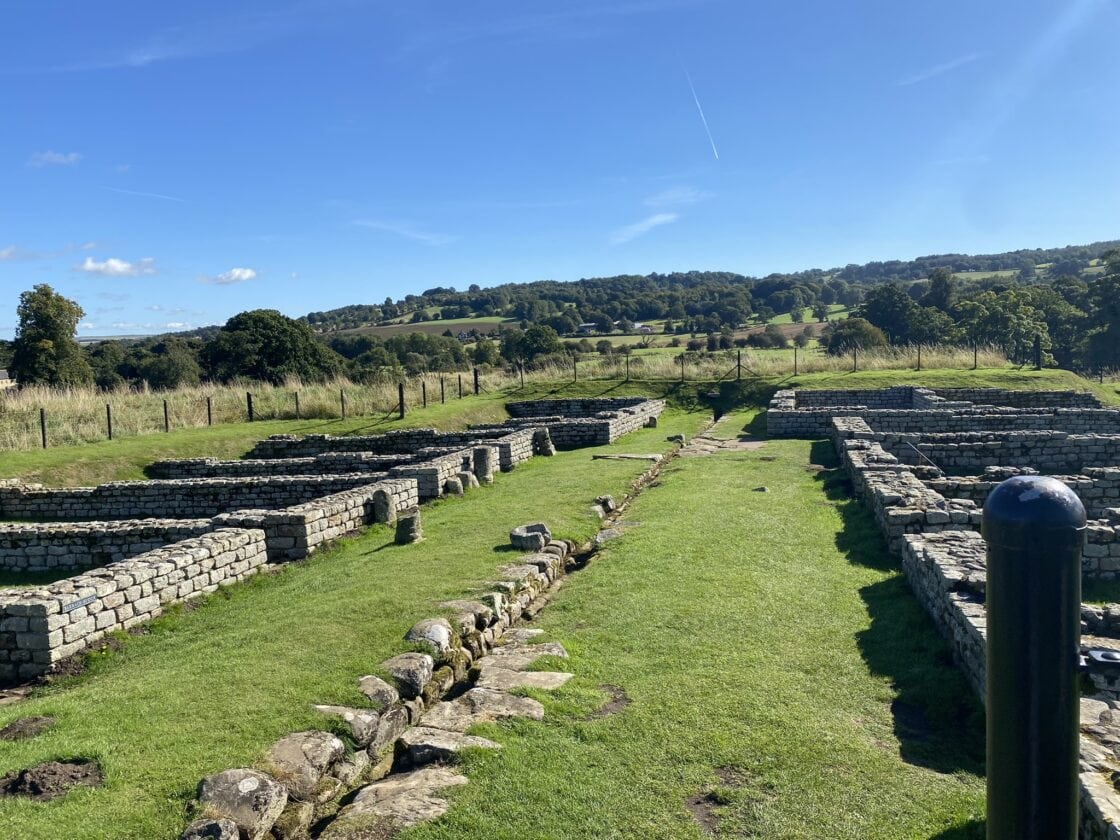
This area was particularly tranquil with views across the river flowing over ancient stones and native flora and fauna. We ended our visit watching a few guided tours delivered by enthusiastic and knowledgeable folk who had their audiences laughing out loud. Chesters has a great tearoom, outdoor seating under some impressive Scots Pine trees and a team of helpful staff.

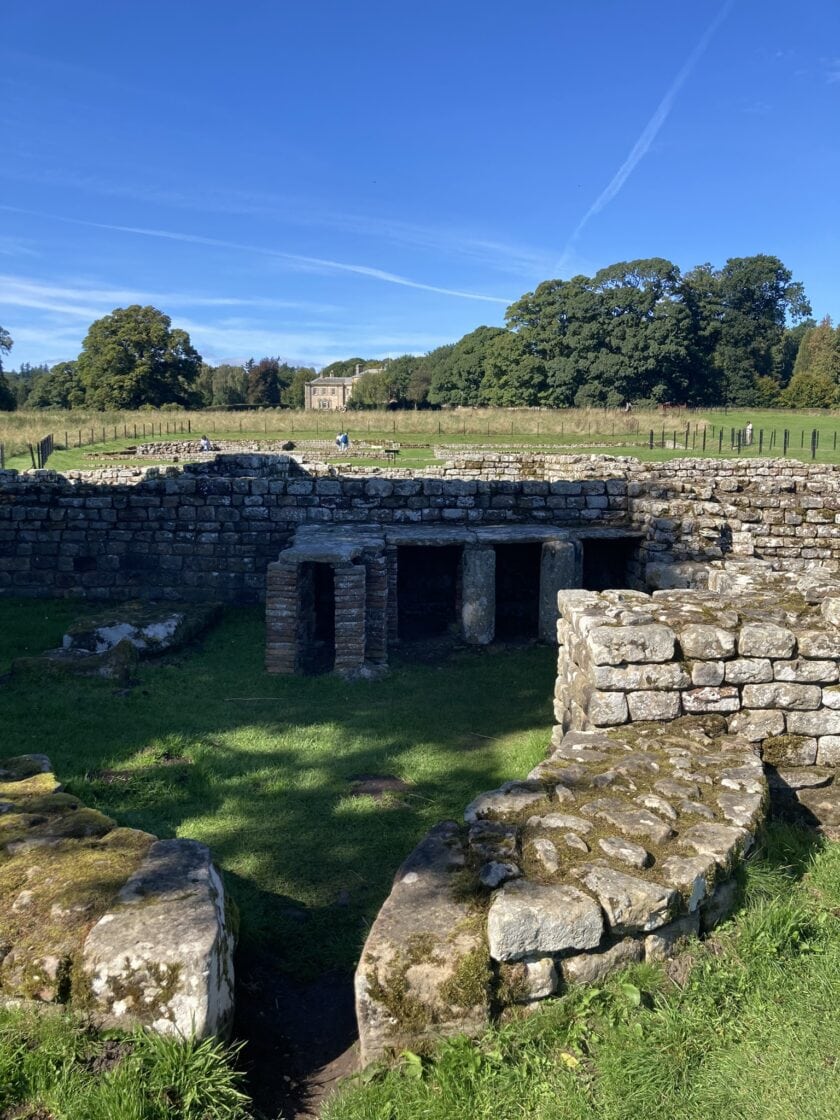
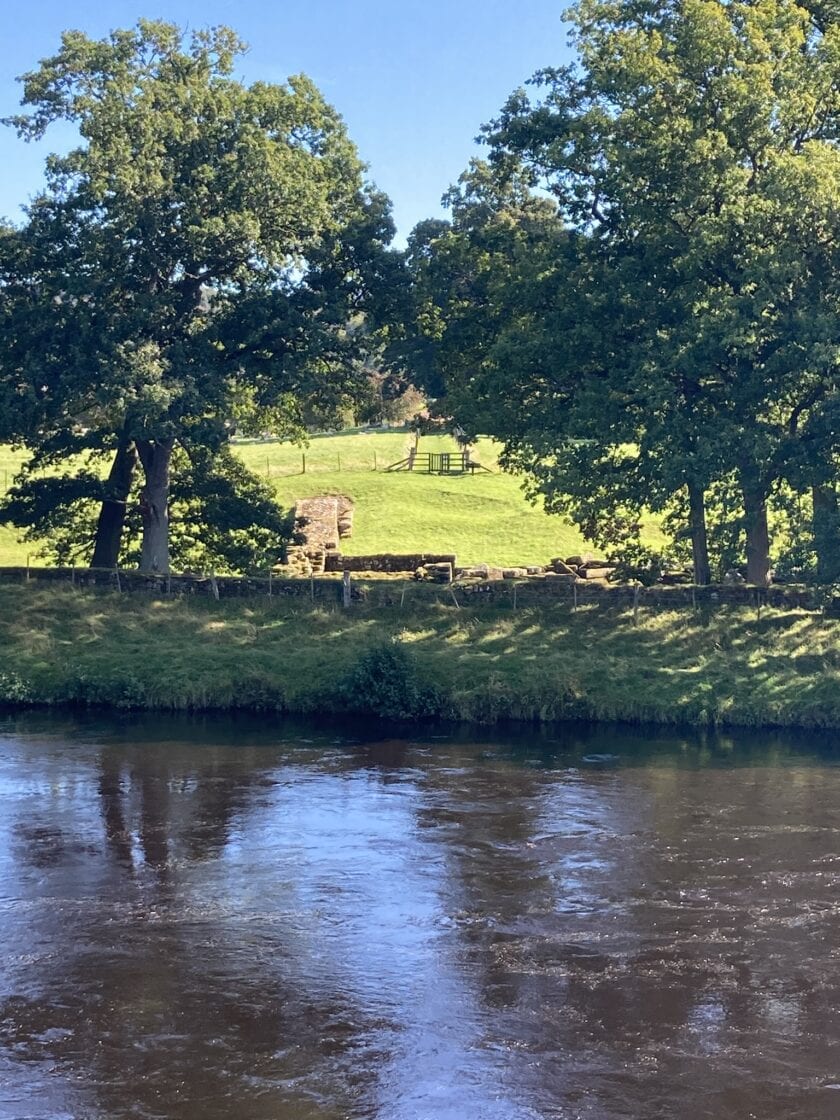
Big vistas and small turrets
The route west from here climbs gently to over 200 meter as it passes Black Carts Turret, a rather snug lookout at 11ft square overlooking a vast area with views for tens of miles. Not a great ‘watch’ for the soldiers compared to Chesters with its bathhouse and amenities, however evidence of a fireplace and stone to grind flour presumably made this remote location a little more tolerable. The path here and onwards to Limestone Corner (no Limestone just hard rock, but a corner nevertheless!) is good and again navigation is straightforward.
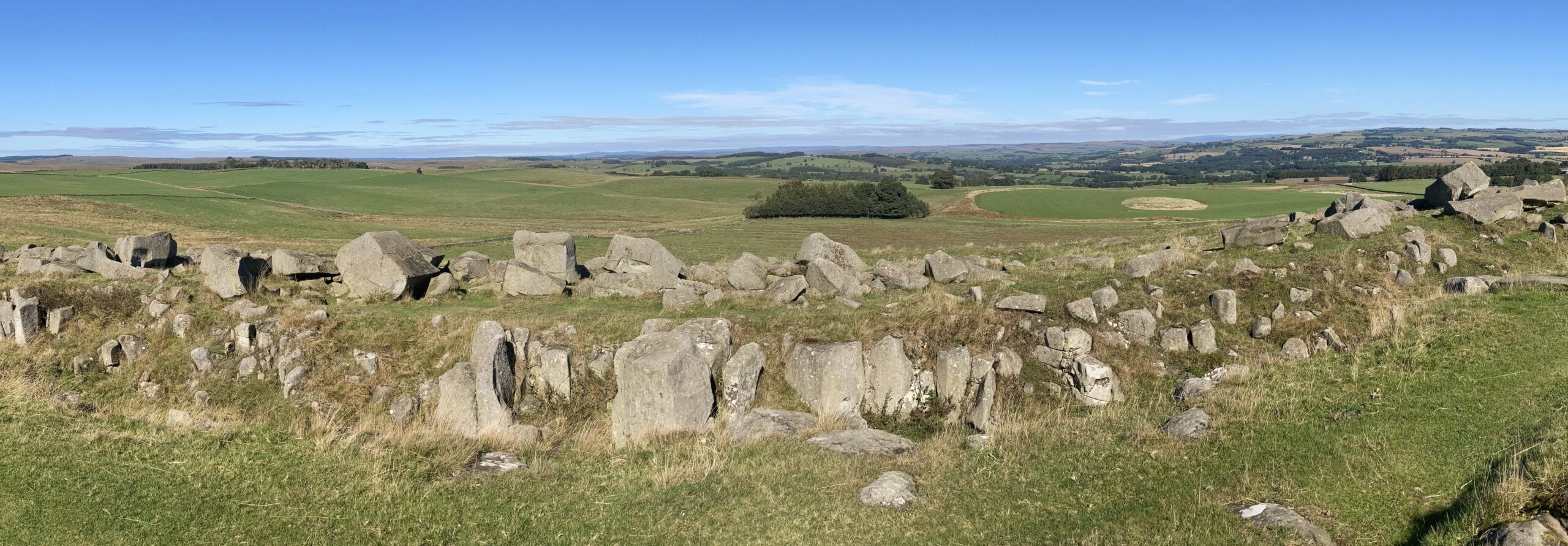
Next stop for us was the Temple of Mithras and Carrawburgh Fort where we consumed a welcome cold drink from The Corbridge Coffee Company van and a cuddle with its newest employee – an appropriately latte-coloured Labrador puppy. The Temple is dedicated to the Roman God Mithras who was particularly popular with soldiers and it is now one of the best remaining examples. The site is simple with three reconstructed altars and the outline of the main building, with an information board helping to bring the site to life. We paused for a quick chat with a group of west to east Australian walkers who were buzzing from their visit to Housesteads Roman Fort and the days they’d spent on the central section.
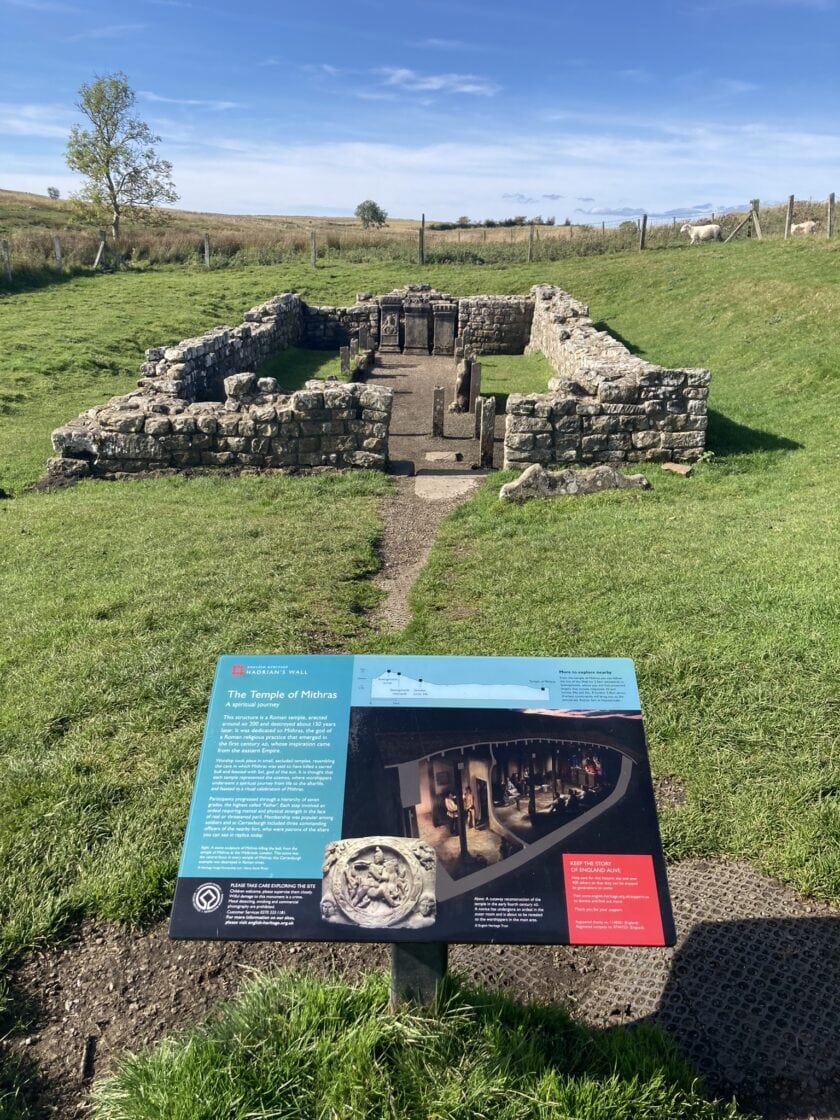
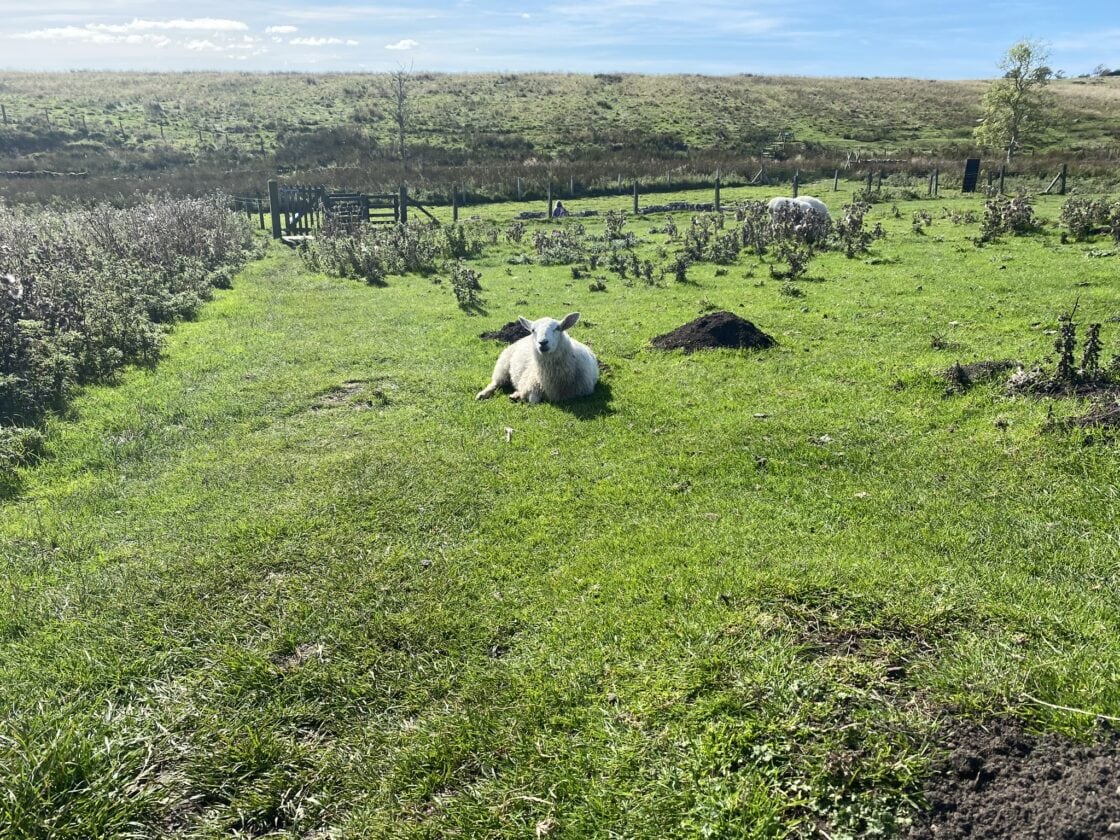

Housesteads is set high on the crags with panoramic views, an impressive excavated granary, barracks, inn, hospital and “the oldest toilets you’ll ever see”! The climate must have been extremely harsh at times here, however on our visit the heat and cloudless skies made it feel more like Rome so the airconditioned cinema running a 20 minute film felt delightful. As with all the large sites, the guided tours we saw looked fun and informative.
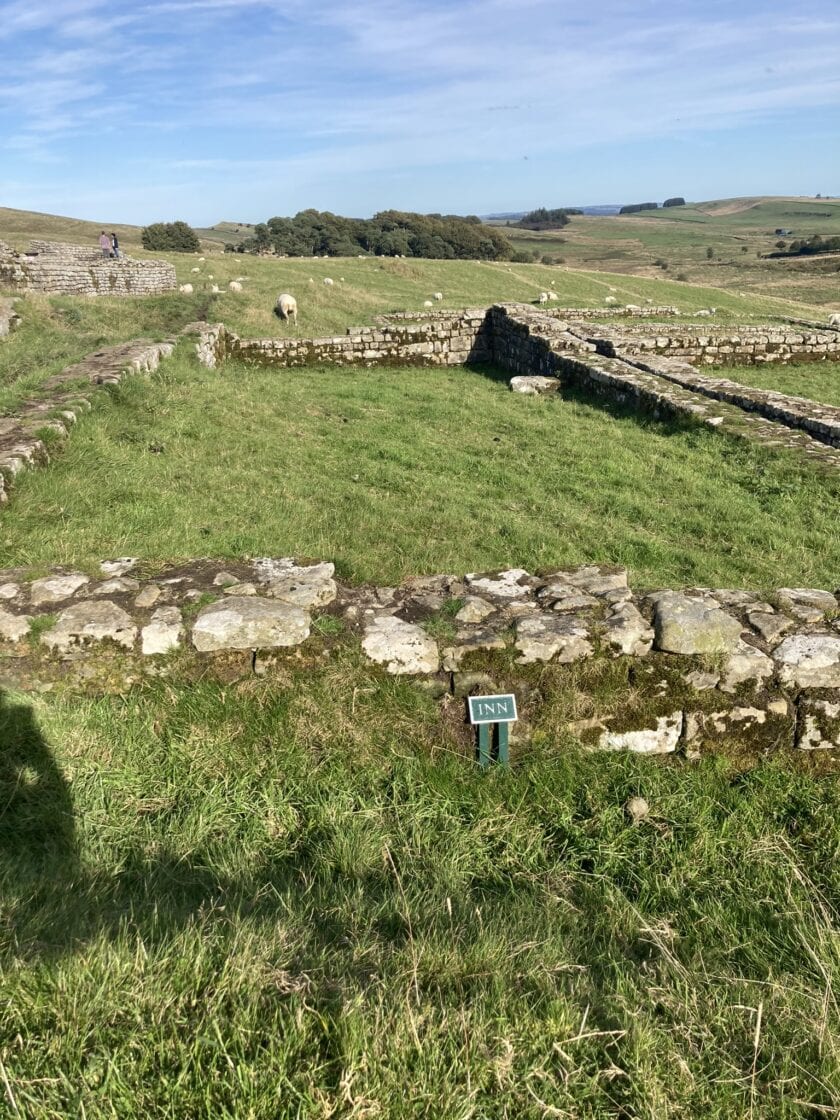
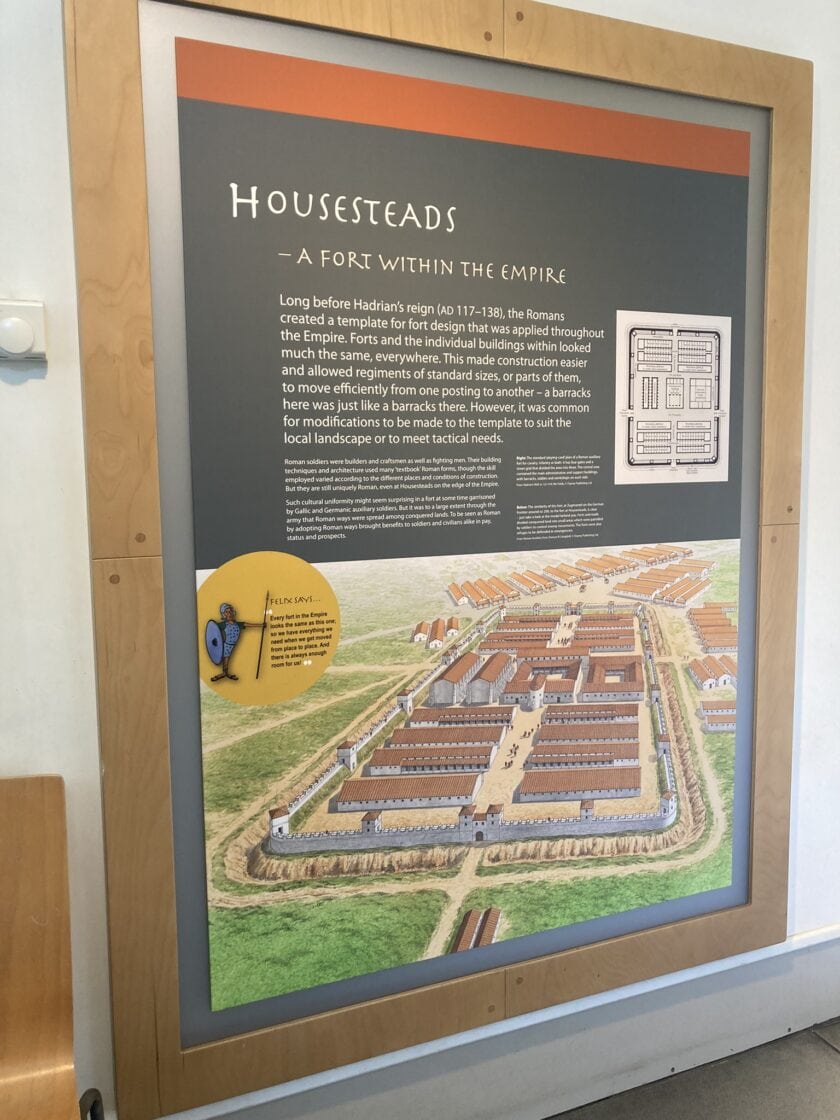
At the end of a long day we stopped off at the National Landscape Discover Centre a.k.a The Sill; an architecturally empathetic building whose roof and angular design mimic the crags themselves and so blend into this unspoilt landscape with ease. Staff are great and it’s very walker friendly with sun screen, blister plasters and maps stacked high at every till. The aptly named AD122 Shuttle Bus stops here and runs between Hexham and The Roman Army Museum.
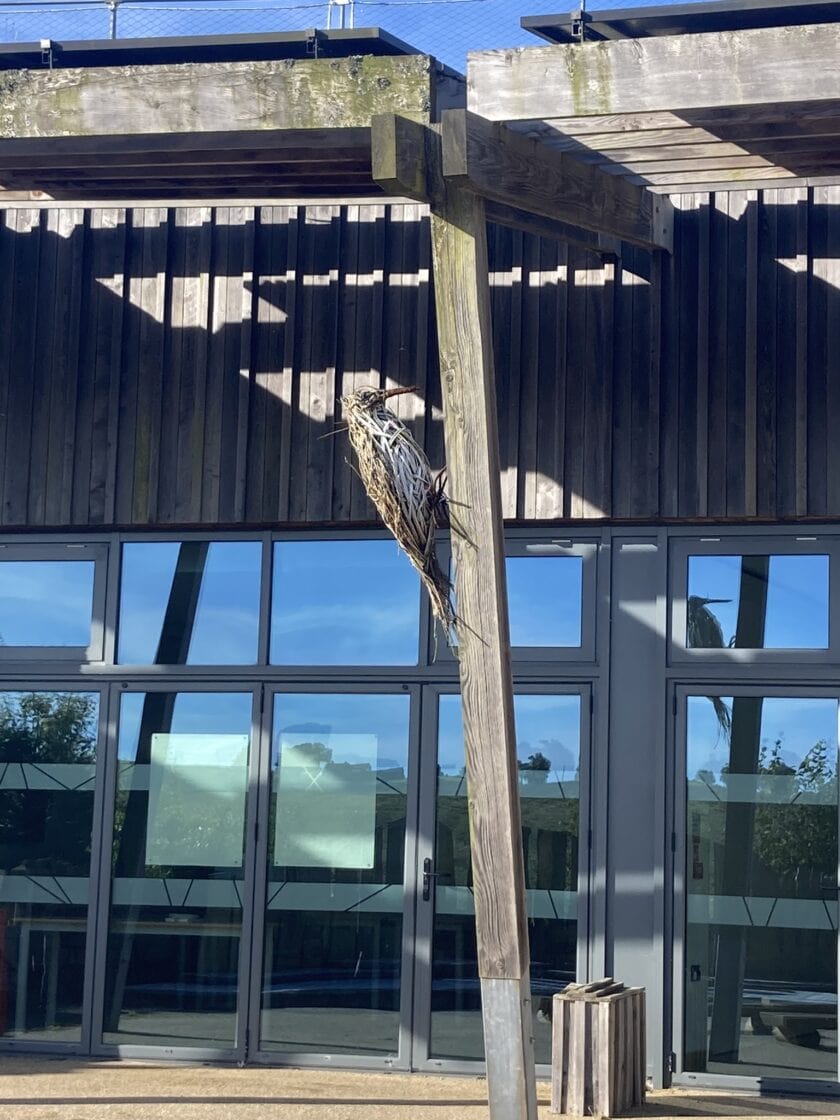
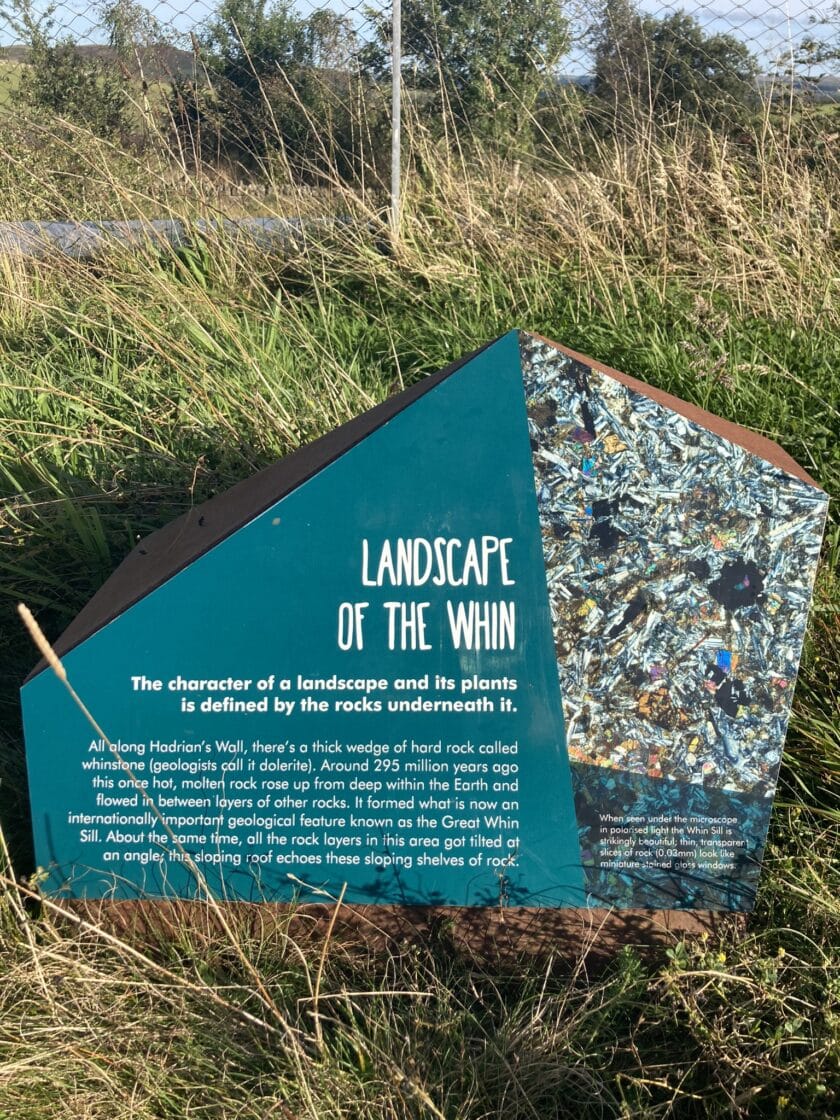
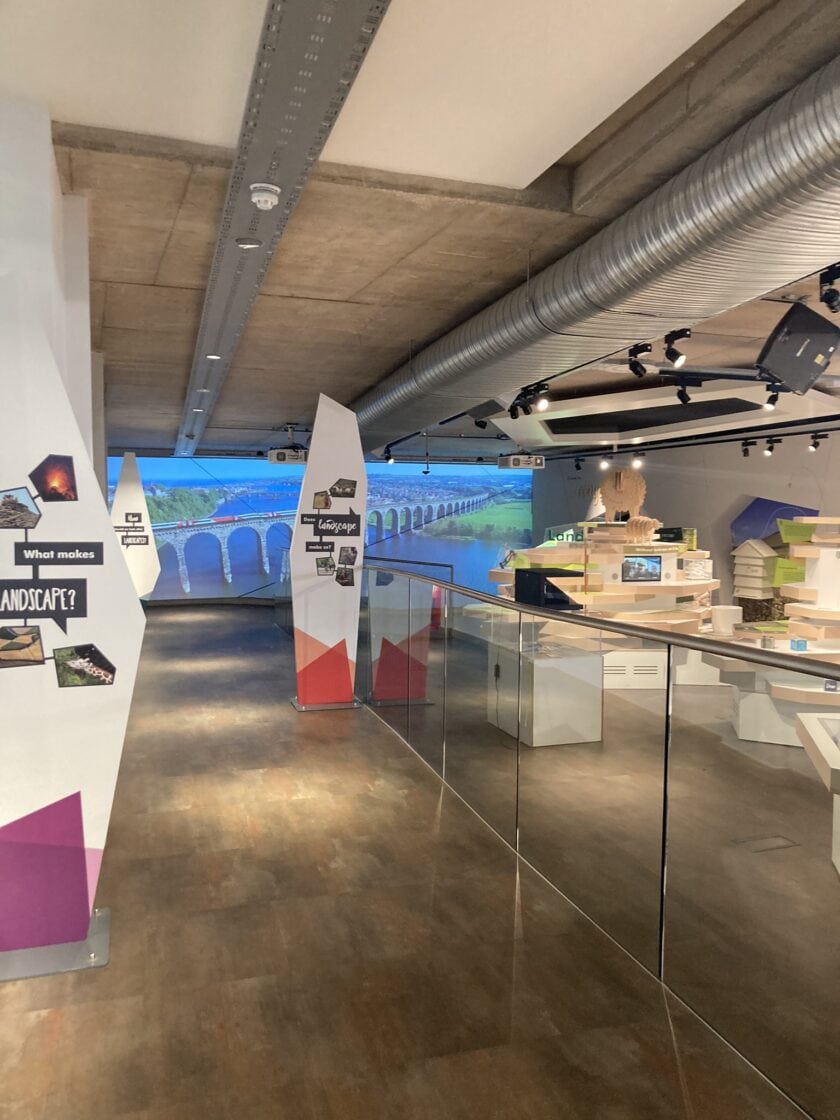
The Sill is currently housing a trunk section of the illegally felled Sycamore Gap tree as part of a wider project intent on moving on positively from this event. Over 2000 suggestions were received by a new partnership of local and national bodies canvassing how people wished the tree, and all it symbolised, to be commemorated. The second part of the display will launch in Spring 2025.
The roof of this innovative building is an experimental living landscape sown with the hardy species that you’d find out on the crags. The thin, nutrient poor soils and chilly winter temperatures make for a tough existence with only the rare Whin grassland community thriving. Next door is the Twice Brewed Pub and where many of our walkers stay. It’s also a brewery and stargazing centre complete with its own planetarium – what a fabulous combination! Northumberland, with England’s most pristine dark skies, is an International Dark Sky Park and it was easy to see why. Light pollution is minimal and the skies were mesmerising even without a telescope.

Recharged by the hospitality of our amazing hosts at the Old School House in Haltwhistle and a home-made Granola that could fuel a hike to Everest (or Sycamore Gap to be precise), we set off to walk this iconic stretch of path. Summer had returned with glorious temperatures and we enjoyed the ascents and descents from Cuddy’s Crags towards Steel Rigg. We stopped for a drink and watched a Kestrel try and fail to catch its prey before with some anticipation, took the steps down to Sycamore Gap. A Canadian couple were chatting by the tree stump; we all tried to imagine this perfect specimen filling the void of the gap and wondered if the notoriety of its felling would in some way help all our trees secure more protection. I’ve read it was the Romans who brought Sycamore trees to Britain, so it came as no surprise to see the new shoots doing so well – this resilient tree is here to stay.
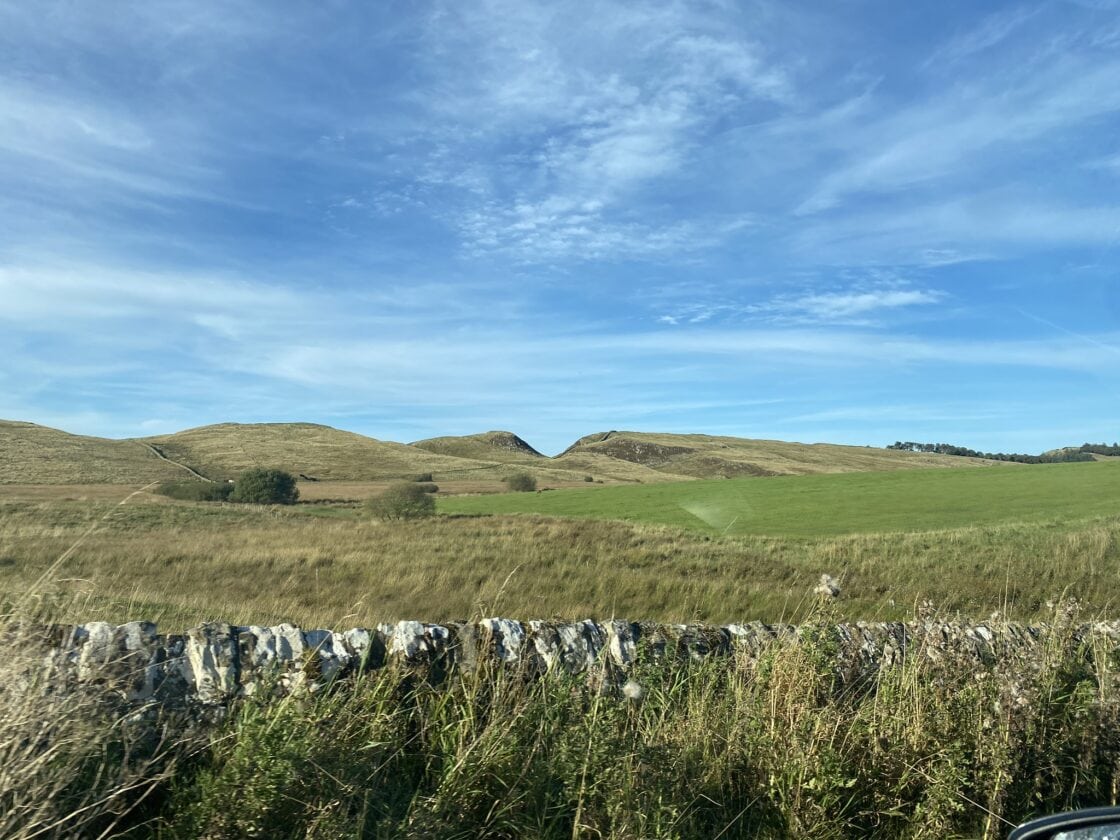
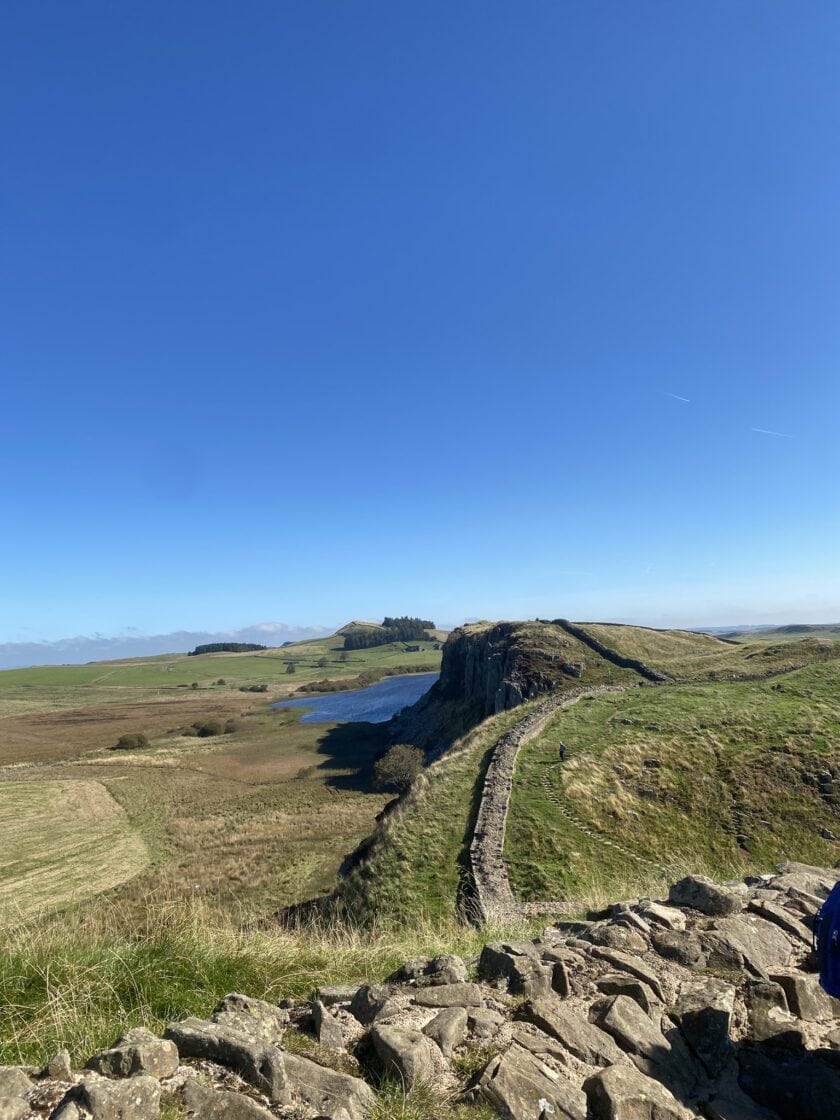
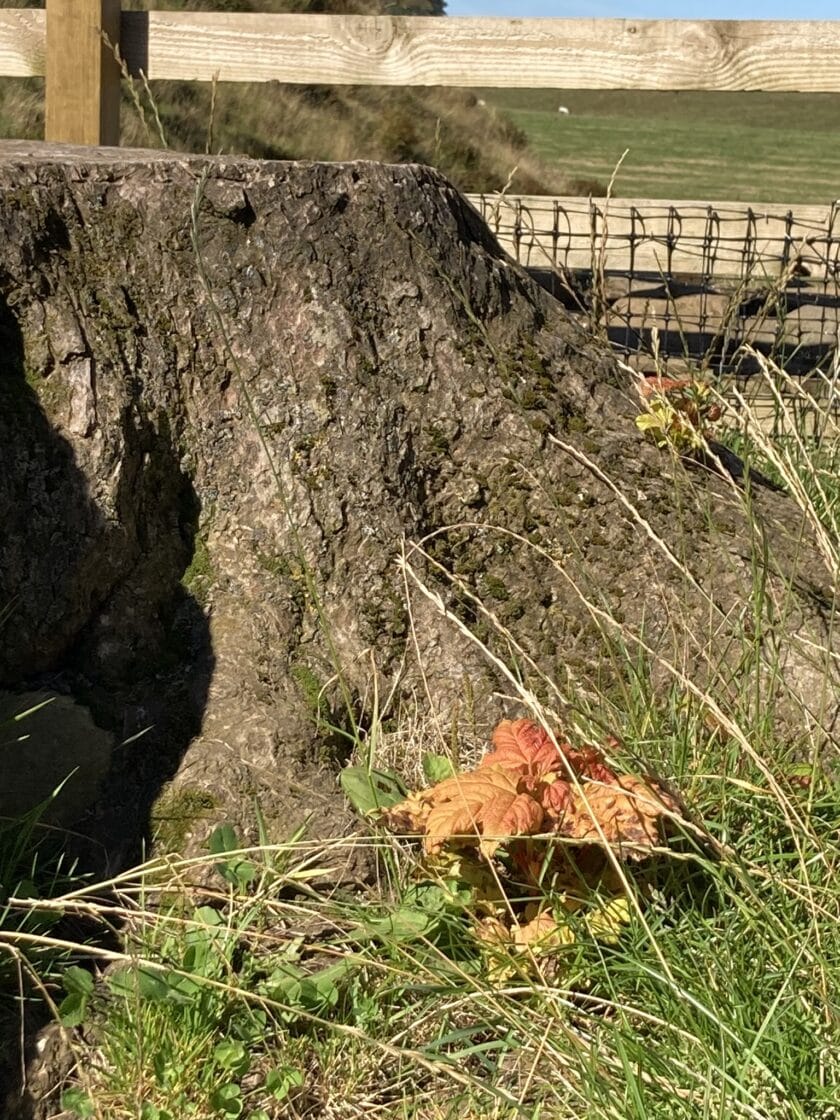
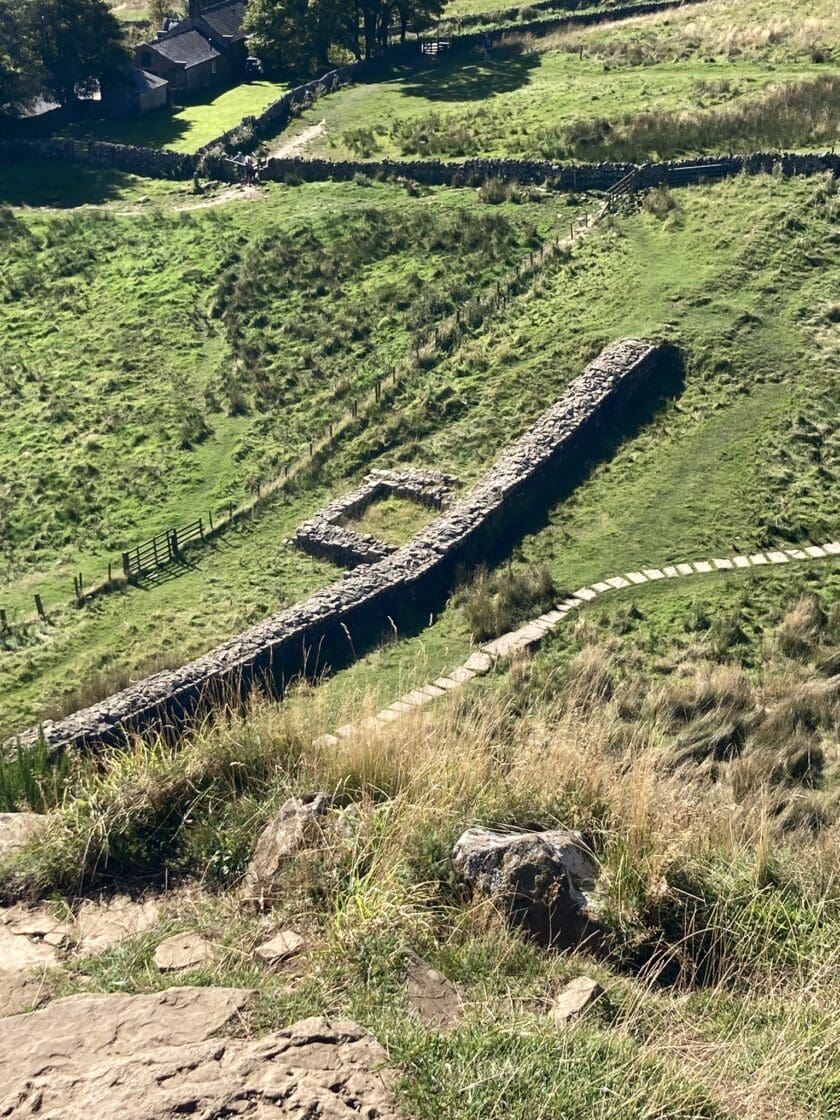

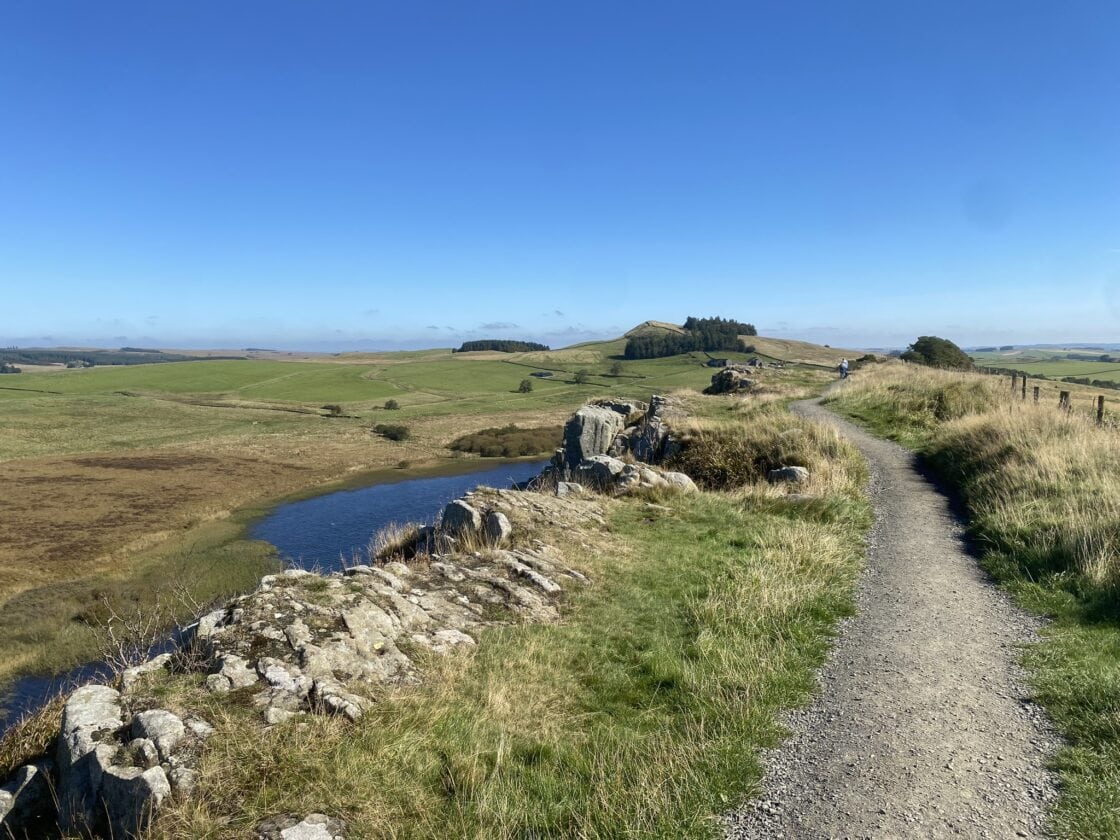
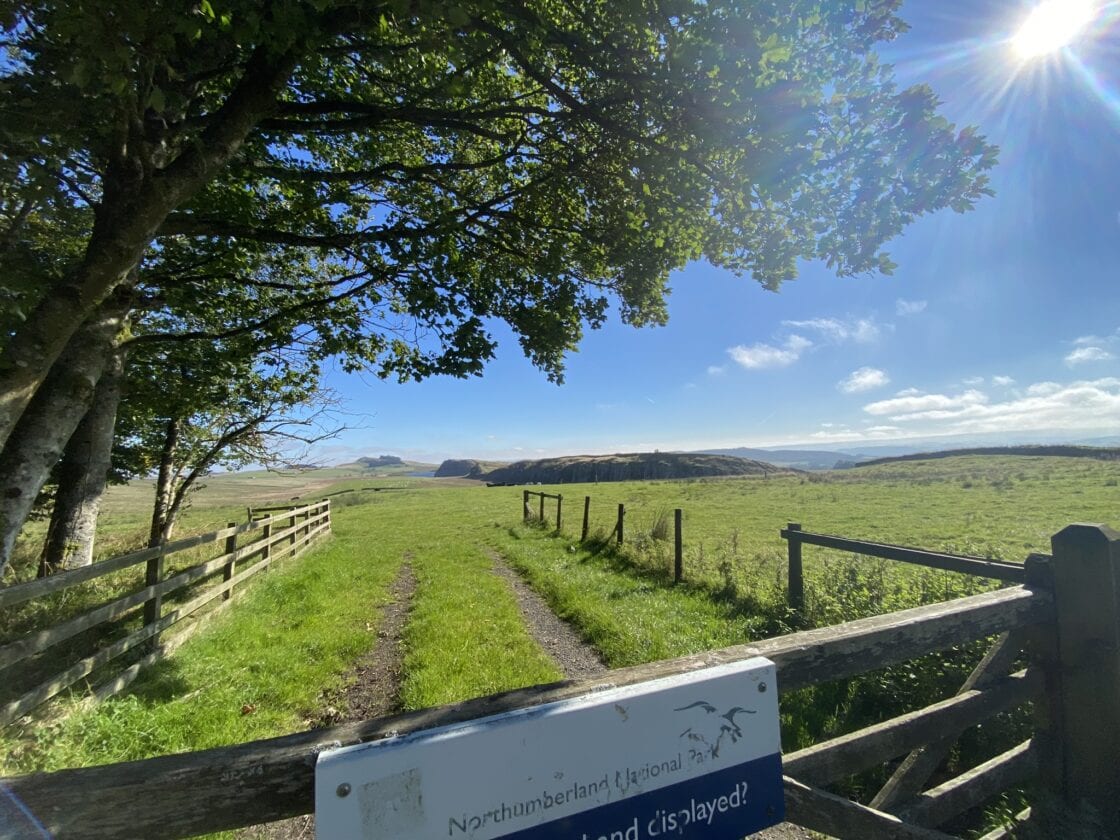
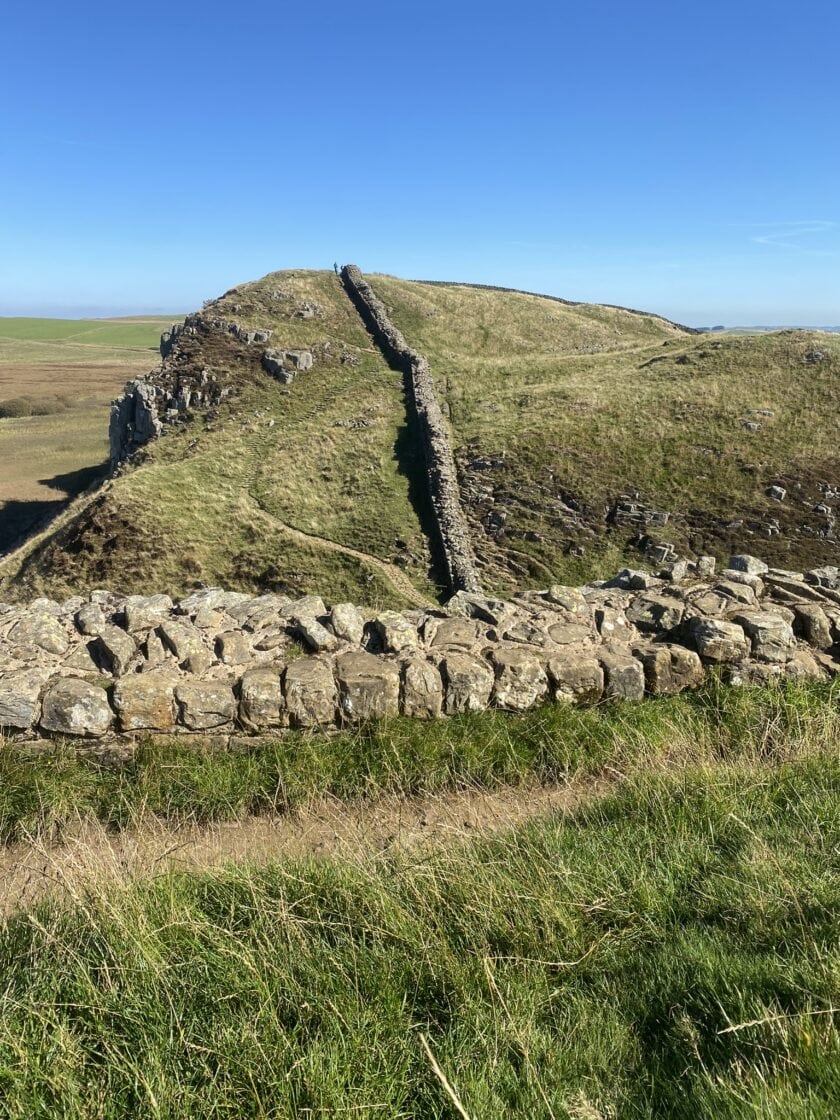
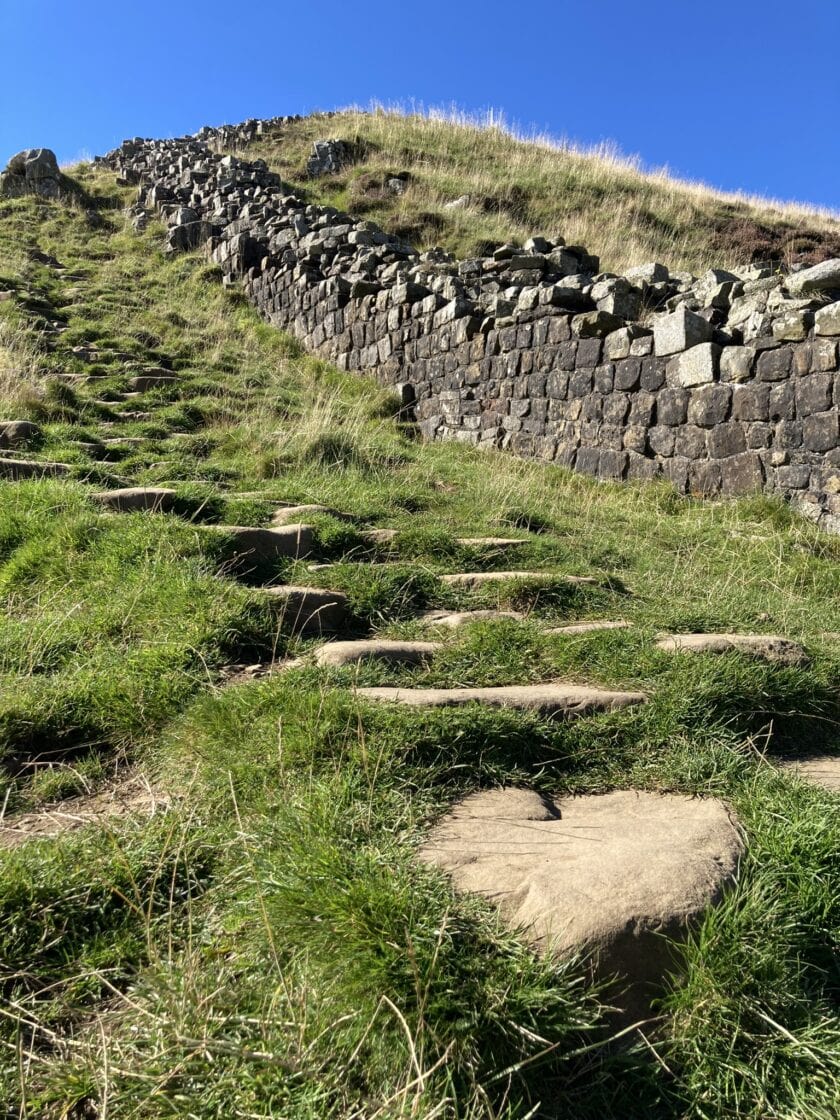
The afternoon was all about Vindolanda, regarded as one of the most significant sites along the Wall. It’s still an active archaeological dig with the latest tranche of work set to run for 5 years. A highlight was seeing the Vindolanda Writing Tablets – a remarkable collection of ancient Roman letters and documents, some singed from a fire that apparently was meant to destroy them but went out just in time. The translations reveal military talk and conversations between friends and family – the personal aspect of it seemed to narrow the 2000 year gap that separates us from the writers of these rare snapshots. The site was popular but certainly not crowded and there were plenty of opportunities to enjoy the curated artifacts and a well stocked shop from where I purchased my own weight in posh biscuits for the Celtic Trails team, only the best will do!
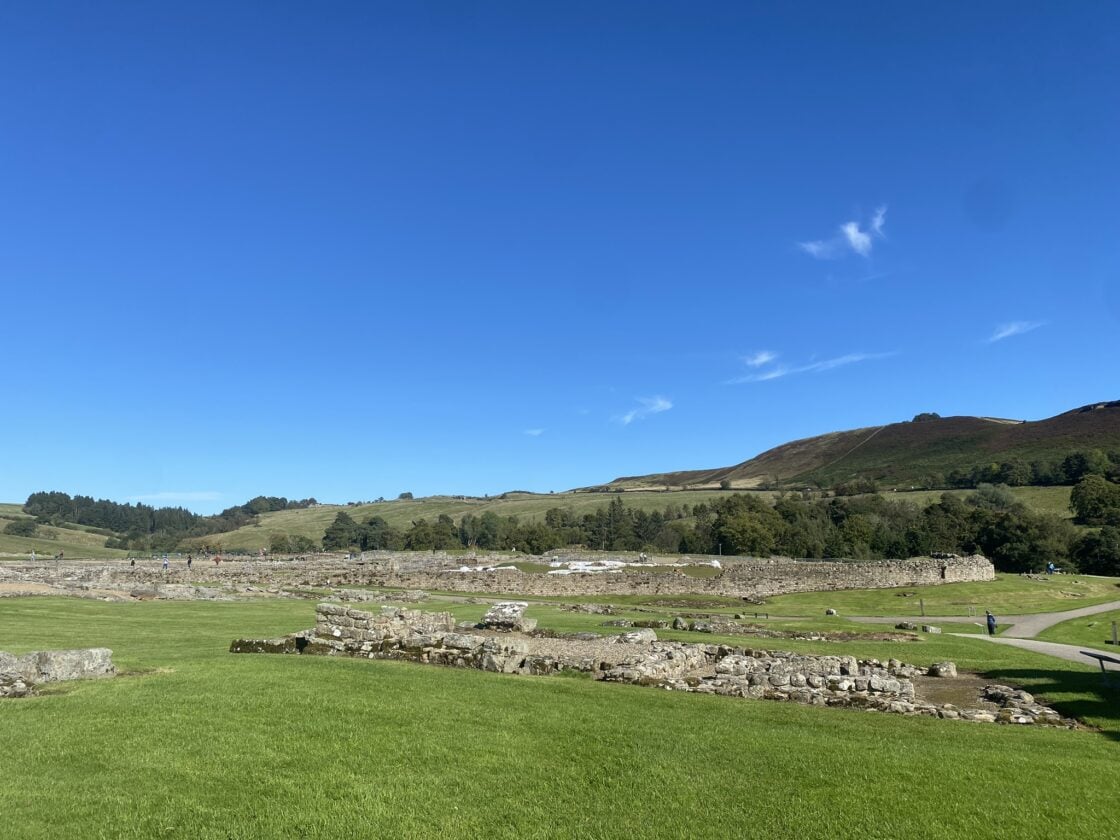
A little further west are the historic mining sites of Cawfields and Walltown, both now reclaimed by mother nature yet mined until as recently as 1972. The Wall at Cawfields is truncated abruptly above the exposed face of the Whinstone and with a short climb, gave wonderful views east over milecastle 42. Nearby is the Roman Army Museum, owned and run by the Vindolanda Trust. Again, the site has ongoing archaeological digs which we felt created an air of excitement and particularly as they are happy to answer questions. We thoroughly enjoyed the excellent ‘Edge of Empire’ film in the purpose-built cinema. With a 17 min run time, it’s pitched perfectly for all interest levels with its mix of drone footage, Eagles and creative storytelling.
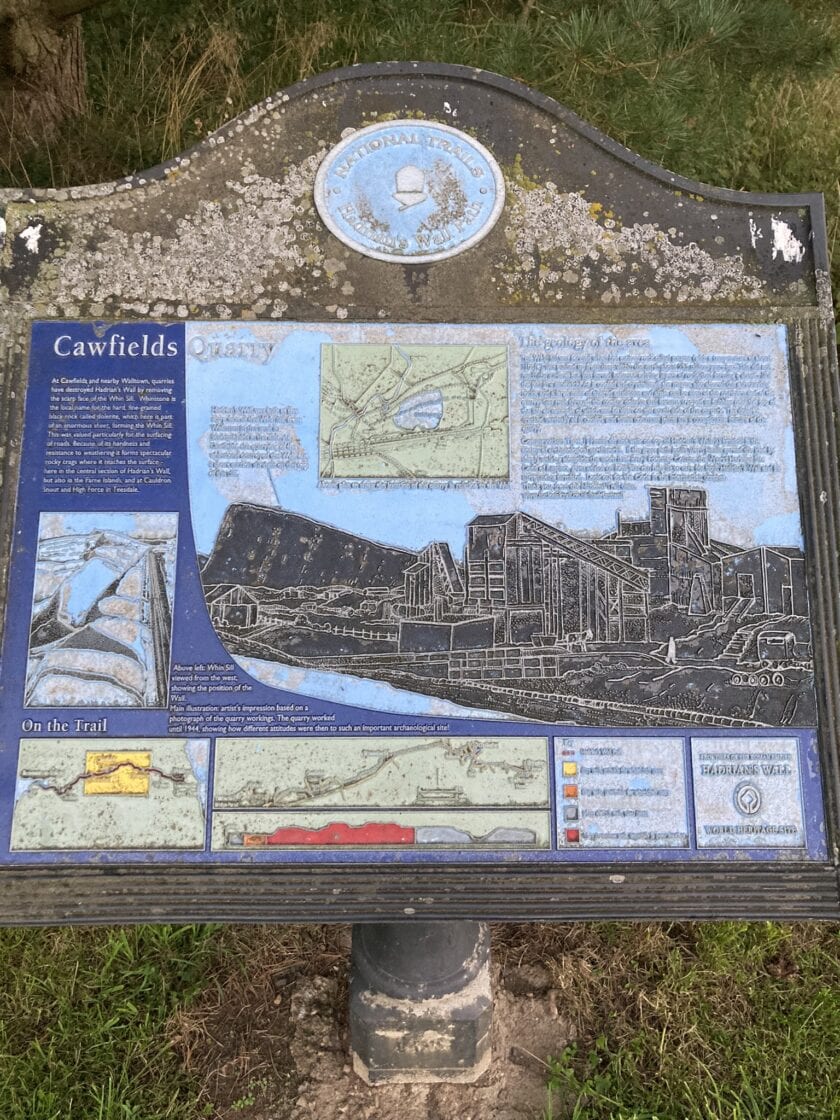
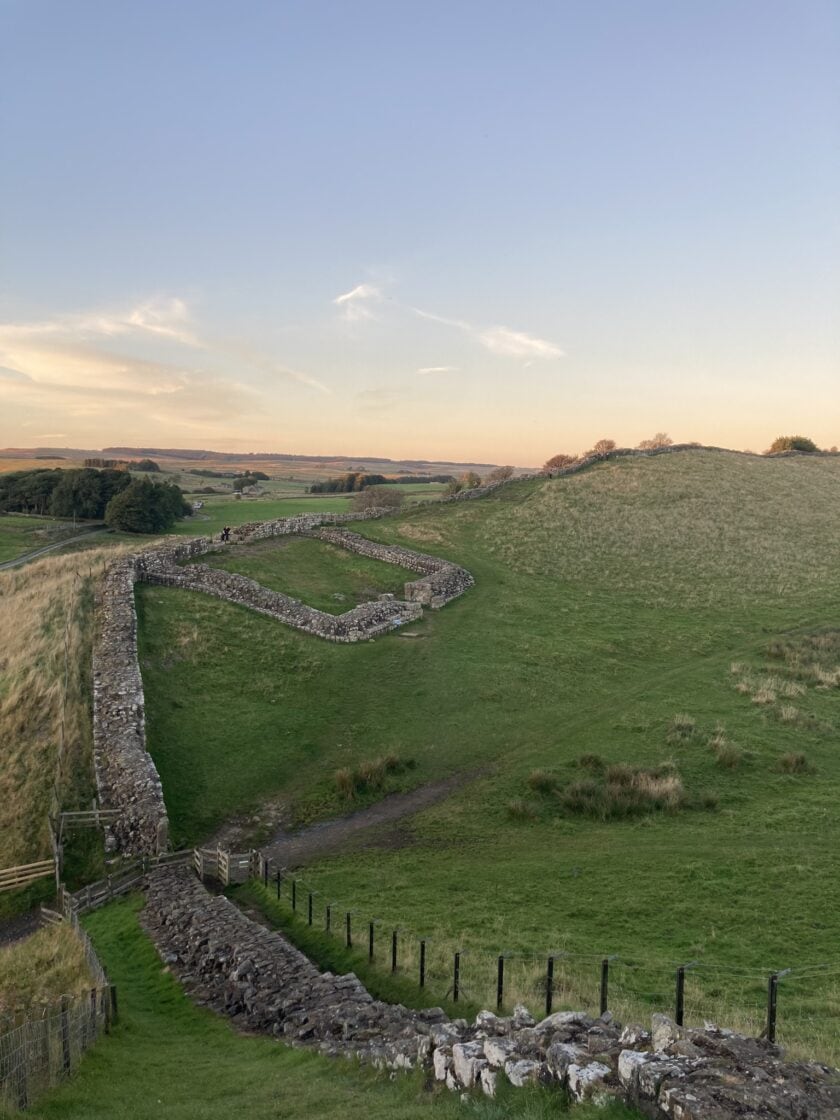
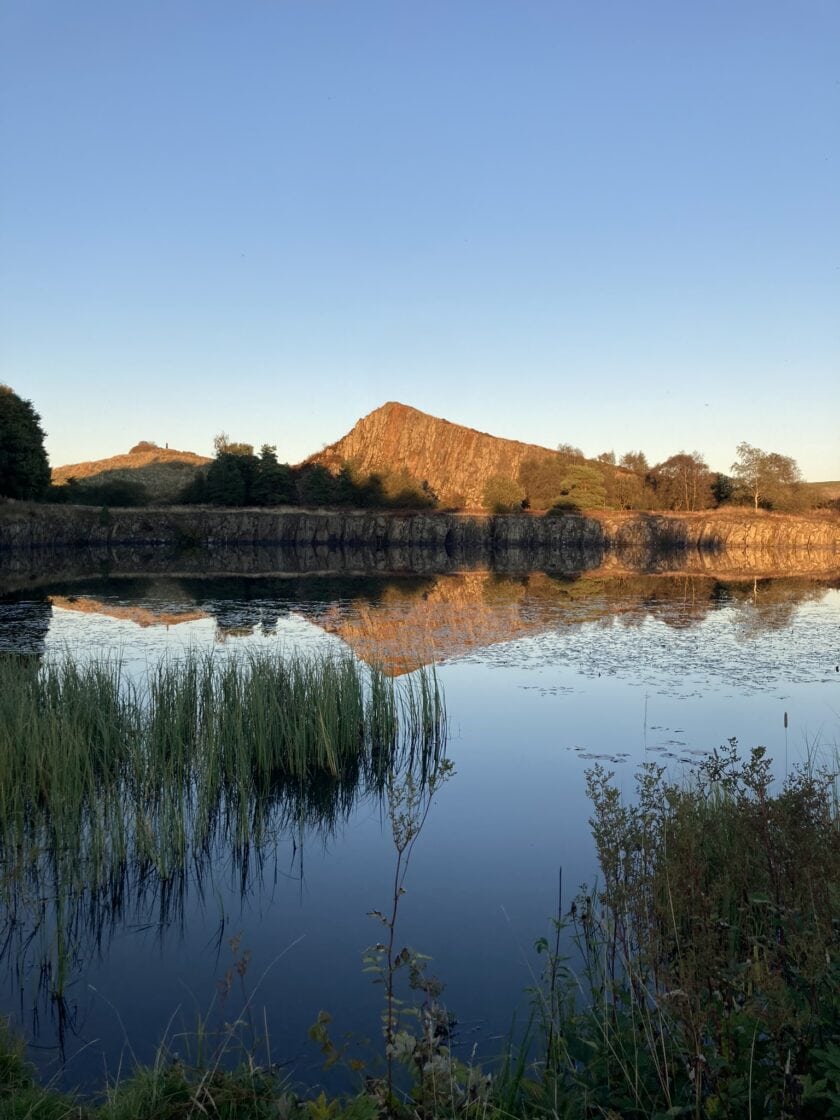
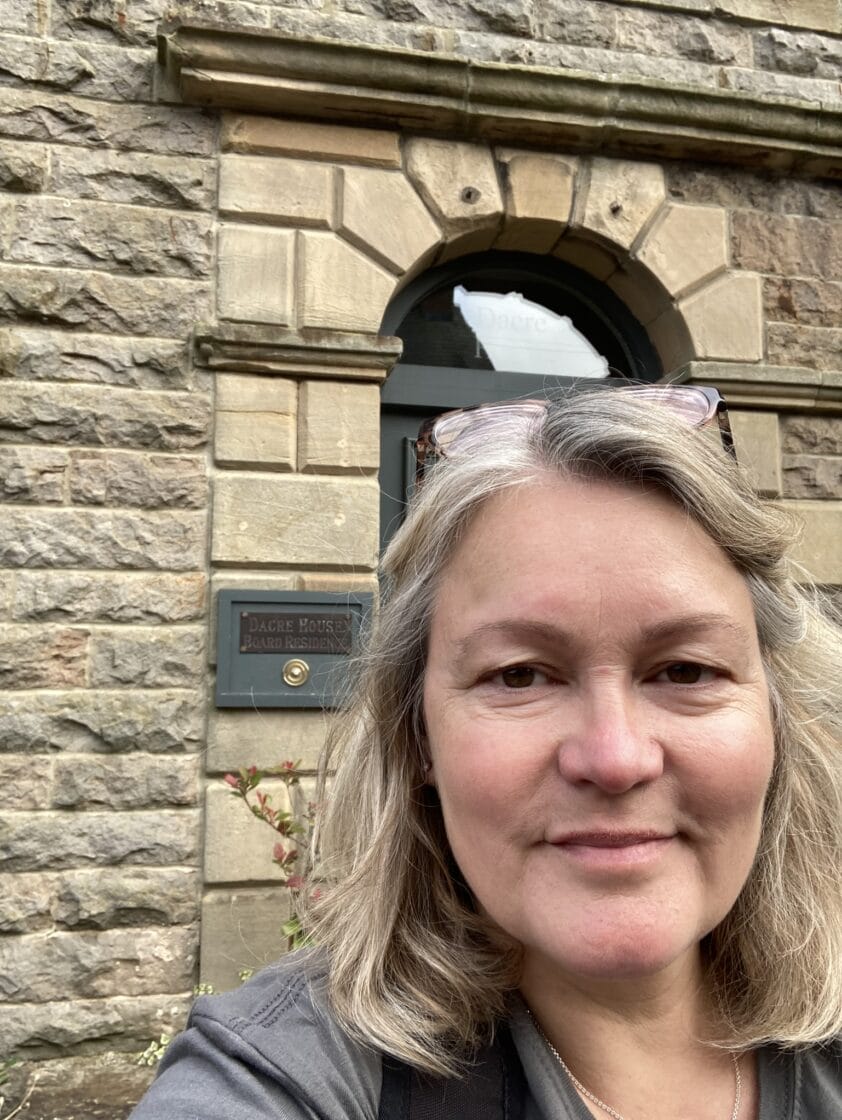
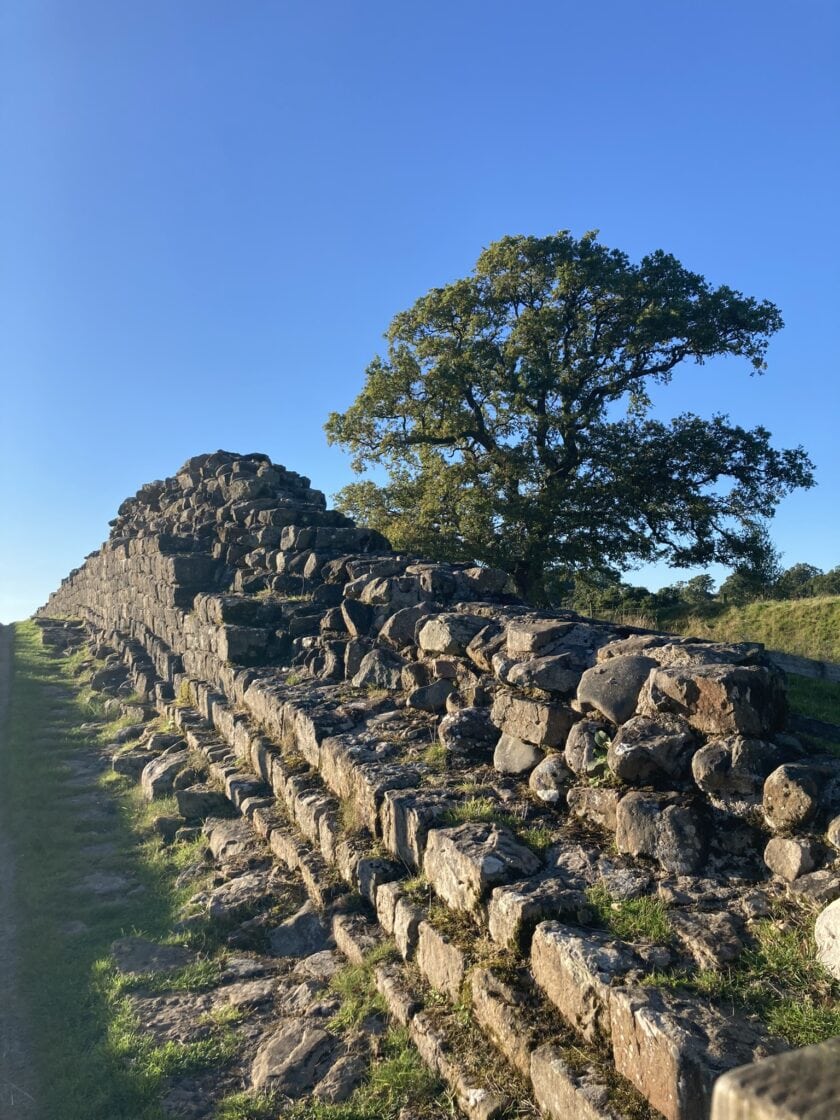
The last night of our adventure had arrived too soon. Our B&B in Gilsland was close to Willowford and the River Irthing so after making a few more visits to our super accommodation hosts in the village, we ventured out to catch the evening light drench the 914 metre stretch of Wall. In places it still reaches 8ft tall and incorporates two turrets and impressive bridge remains on the River Irthing flood plain. It was joyous that in just a few quiet minutes we spotted a kingfisher and a dipper – both birds indicators of a rich and healthy habitat. This stretch of Wall was an immediate favourite for both of us and is equally as picturesque walking in either direction. I could have sat here for hours.
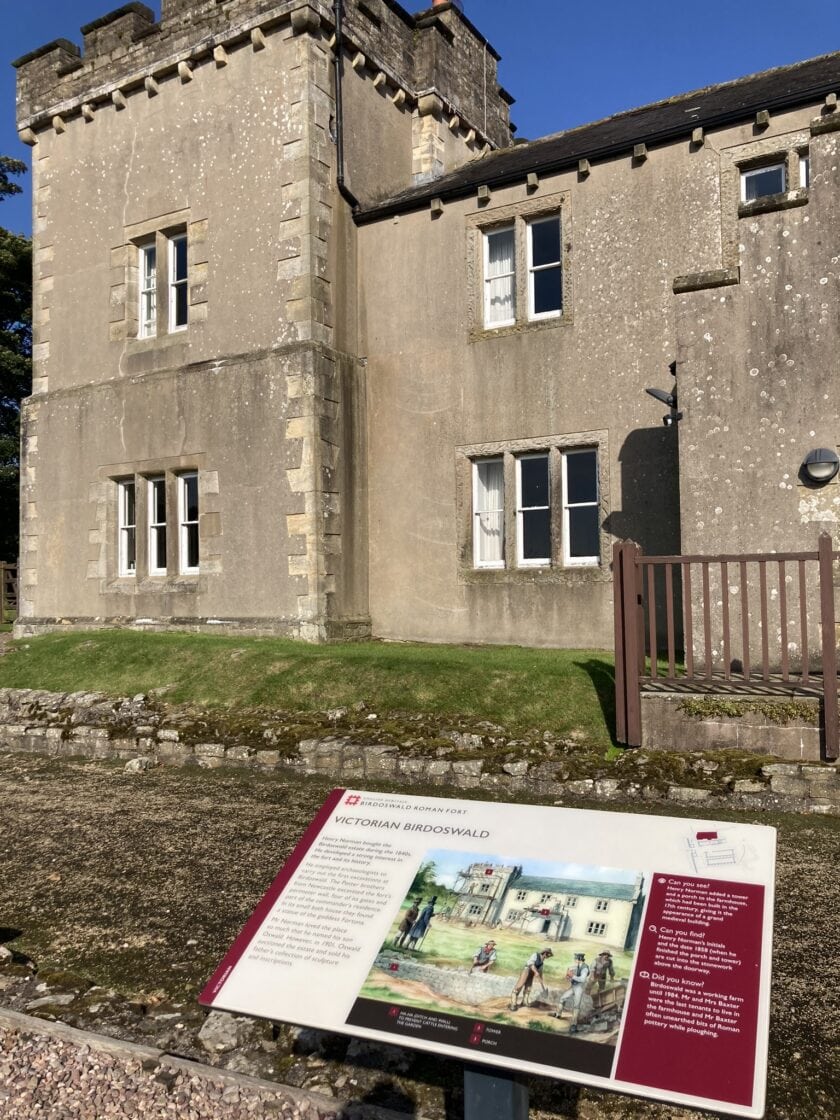
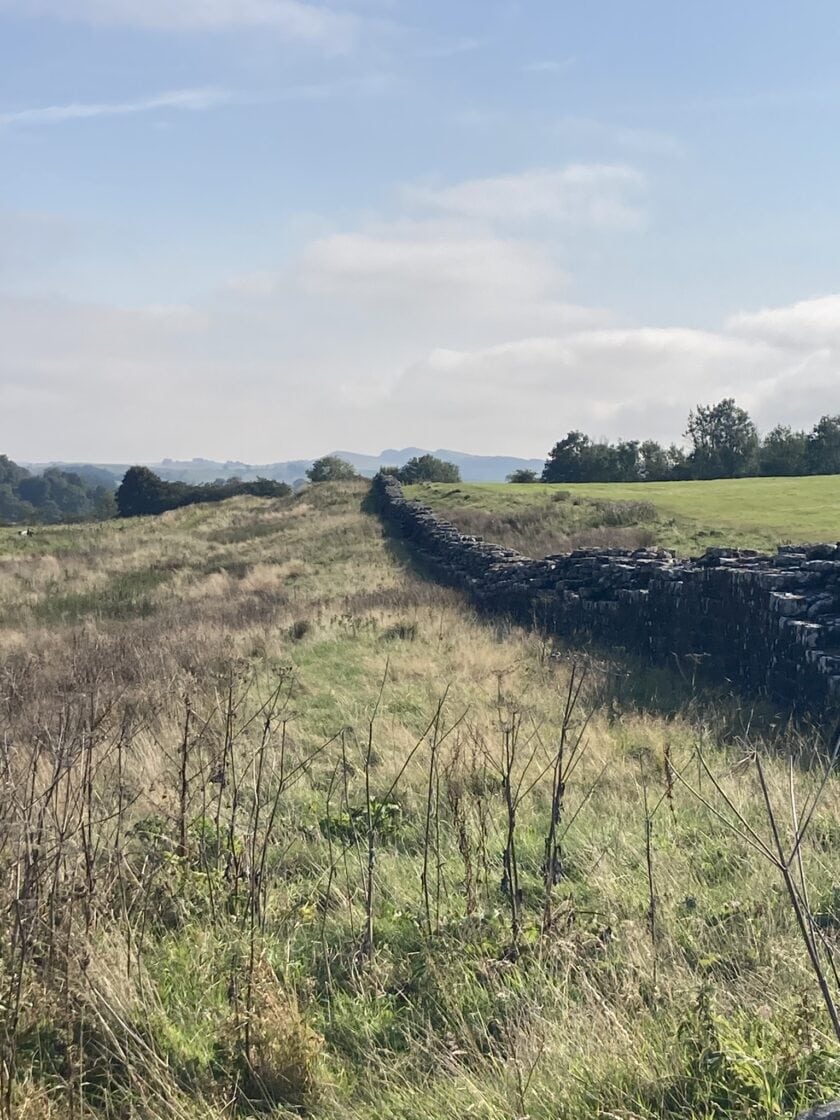
We woke on our last day to a final hearty breakfast in Gilsland and headed to Birdoswald Roman Fort. Unusually, Birdoswald remained in use after the Romans departed up until Victorian Times. Its outer walls are remarkably well preserved, and the setting itself is both evocative and easy to imagine as a bustling Roman site. Compact and bijou, do visit if you can.
Crags and open landscape gave way to views of the North Pennines, Brampton and beyond to Carlisle. We had a train to catch otherwise we’d have continued our adventure to the west coast and the official end (or start) of the Wall in Bowness on Solway. We squeezed a final visit to more of our wonderful hosts in Brampton and Lanercost before gaining just a tantalizing glimpse of the beautiful Lanercost Priory before our time ran out.
Hadrian’s Wall Path was an unforgettable mix of history and rewarding walking across a thought provoking landscape – a real ‘adventure’.
Lisa and Charlie Sanger
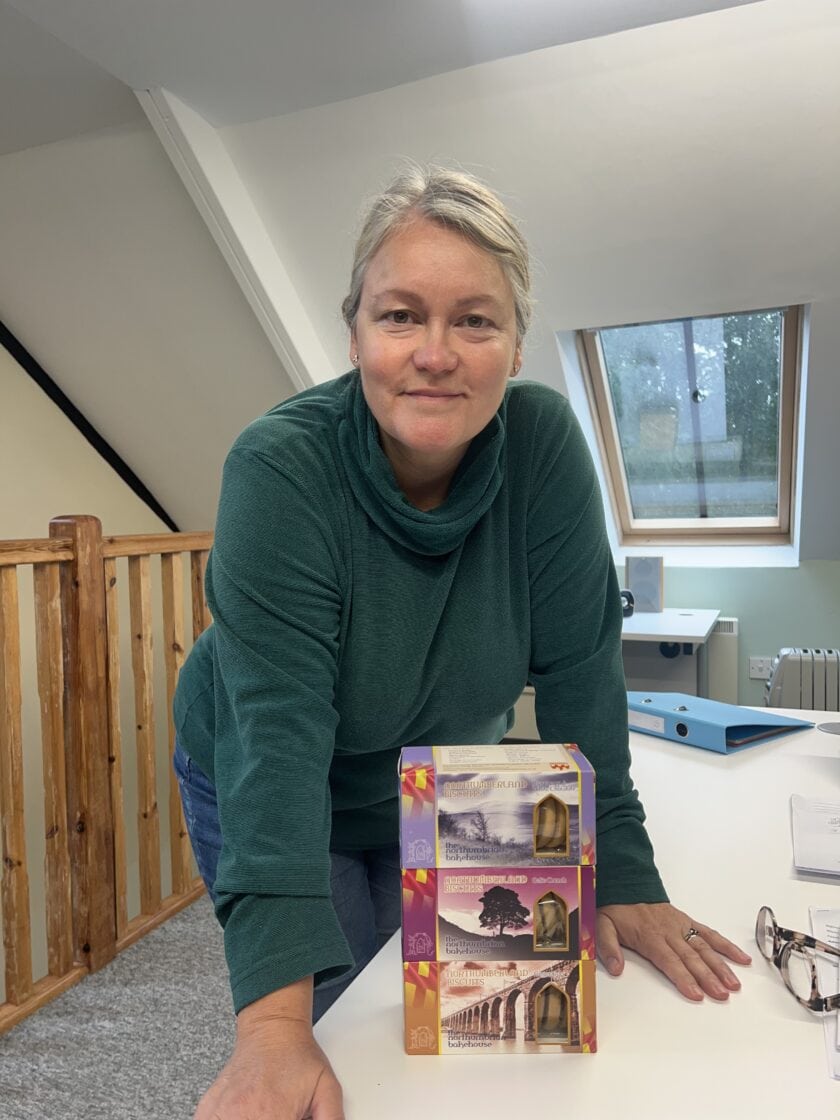
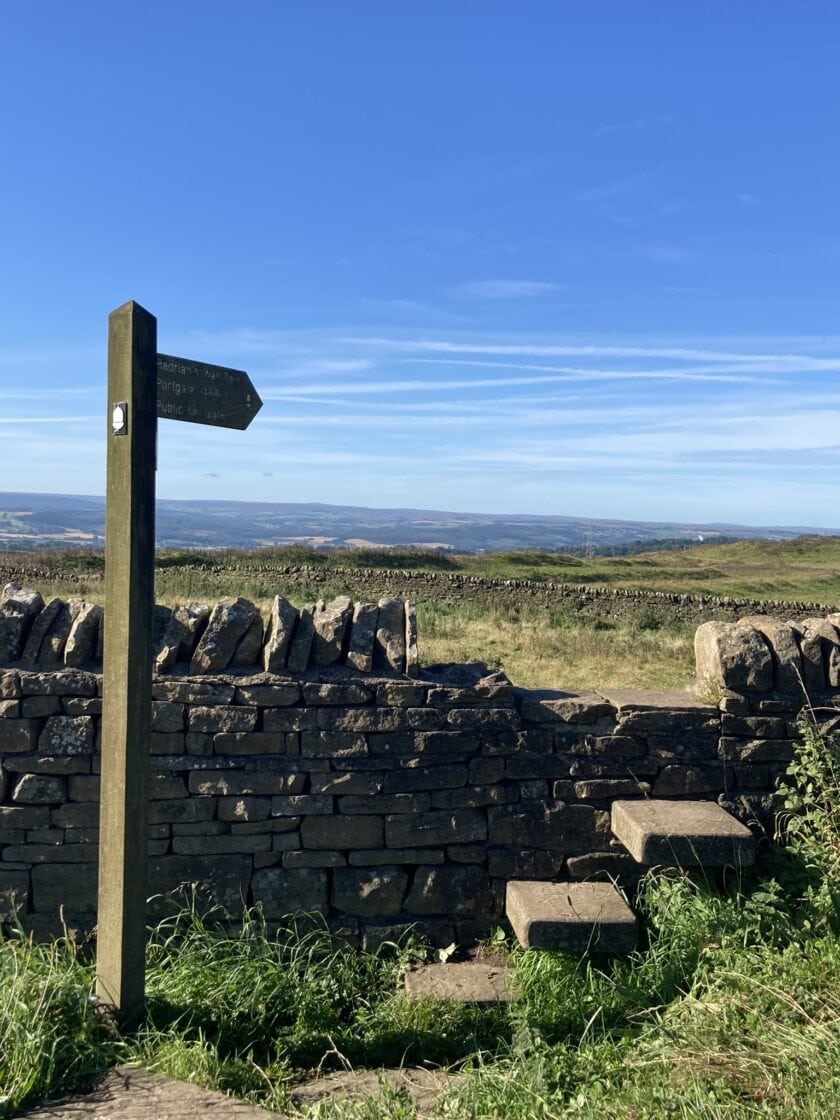

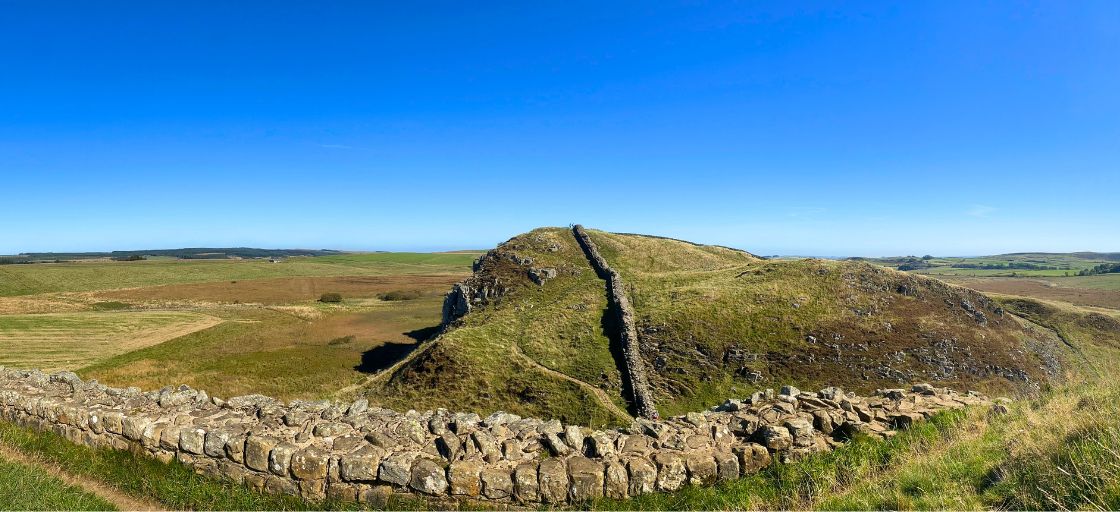

Great blog!